





EDITOR-IN-CHIEF CAMERON







EDITOR-IN-CHIEF CAMERON

FEATURE
DIGITAL

THOMAS
MANAGING
PROOFREADER
CHIEF
JUSTIN
REBEKAH
ADVERT
CALLUM
DANILO
LEAD
SENIOR
JOSEPH
SALLY
PRODUCTION
GEORGIA
DANIELA
PRODUCTION
JANE
MARIA
CHARLIE
MEDIA
From across the spectrum of sustainability, in this edition, we offer the latest in the major trends and innovations that are fast changing the business environment in which the world functions . With the holidays long gone, February is the time of winter when the season becomes a slog, though perhaps not as much this year. As of writing, numerous countries across Europe have seen record levels of warmth, while in North America, despite a fearsome cold snap over Christmas, by New Years people were getting battered by torrential rain.
Into this bizarre world of evolving weather patterns, we bring to you an analysis of some of the main changes affecting sustainability. What role does data have in reducing carbon footprint? What benefits or detractors does becoming B-Corp certified offer a company? And how can the procurement process become more sustainable?


Elsewhere in these pages, you can find profiles of some of the business world’s leading lights, whether it be in terms of diversity and inclusion or green architecture.

Enjoy.
CAMERON
SAUNDERScameron.saunders@bizclikmedia.com




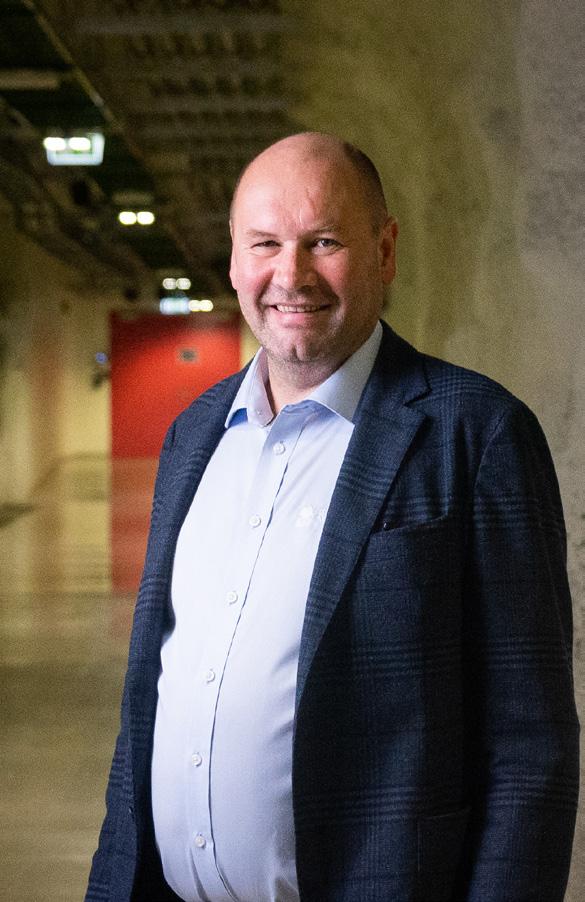
















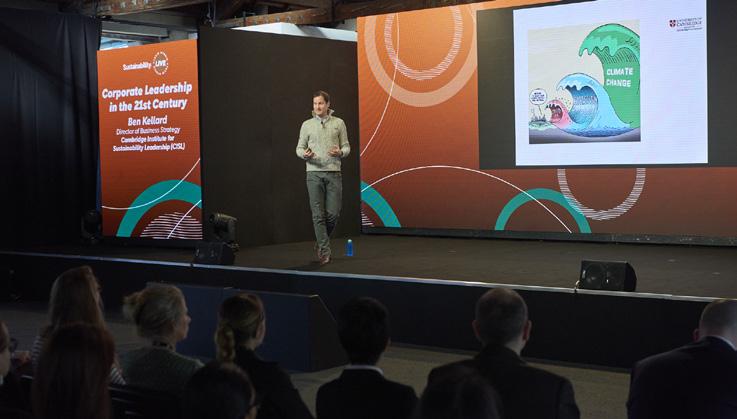


While transitioning from carbonintensive energy sources to renewables is the shortest route towards a net-zero carbon future, it’s not enough. We also need to make sure we use this renewable energy efficiently to create commercial value in a decarbonising economy, explains Tuomo Hoysniemi, Division President, Drive Products at ABB.

mproving energy efficiency is one of four key thrusts of the decarbonisation movement, together with developing clean, renewable energy sources, replacing carbon-intensive applications with electrified alternatives, and accelerating the roll-out of emerging technologies in areas such as hydrogen and carbon capture.
The International Energy Agency (IEA) regards energy efficiency improvements as essential to a sustainable future, terming it the “first fuel” in the drive towards net zero carbon emissions by 2050.
The agency estimates that globally adopted energy efficiency measures could reduce energy use by seven percent by 2030 while still enabling the economy to grow by 40 percent. These measures can have an almost immediate impact using existing, readily available technology, such as variable speed drives (VSDs) paired with highefficiency electric motors.
Millions of electric motors power compressors, fans, pumps, conveyors, and other machinery in virtually every industry today. They range from heating, ventilation, and air conditioning systems to factory production lines and pumping equipment for water treatment and supply.
The truth is that motor efficiency levels have improved significantly – and because motors have a long service life, many older motors are still in service that do not meet the new efficiency levels. There is a huge opportunity to replace them with newer, more efficient motors and pair them with VSDs to maximise savings.
Advances by suppliers, coupled with green legislation such as the EU’s Ecodesign Directive – which mandates that energyusing and energy-related products must meet certain environmental requirements – continuously stimulate the production of more efficient motors and drives. Industries could trim their power usage, on average, by 25 percent by simply switching to modern motors paired with VSDs.
VSD technology reduces energy waste by matching the motor speed and torque to the actual requirements of the process, rather than allowing motors to run at full speed all the time. Yet only around 23 percent of the world’s motors use this technology. The fact that the number of industrial motors is expected to double by 2040 makes this disparity a fundamental challenge to address.
Fortunately, the Ecodesign Directive is actively encouraging the use of motors which meet international efficiency (IE) standards.
From July 2023, some motor types will have to meet a rating of IE4 (the second highest class currently available) as the minimum efficiency standard.
However, it’s possible to futureproof operations with the even more efficient IE5-rated technology already available in a synchronous reluctance (SynRM) motor and VSD package. This offers better savings on energy consumption, downtime, maintenance, and other ongoing costs than standard induction motors, which are the current industry norm.
For Swedish group Ikea, the world’s leading decoration and furniture retailer, sustainability is a main driver of innovation and growth, alongside a commitment to renewable energy. The group installed HVAC systems equipped with ABB’s drives in two of its largest stores in Spain. The result was an increase of 25 percent in energy efficiency for each system.

Similarly, a luxury holiday resort in the state of Rajasthan, India, installed more than 50 ABB drives on the air handling units and pumps of its HVAC system. This is helping the resort save around 30 percent of its annual energy use.
Energy efficiency can help to reach the 40 percent emission reduction targets set in the Paris Agreement. Whereas the steps taken to improve these two HVAC systems may seem small, applying similar solutions in many buildings can collectively represent a giant step towards a much more environmentally sustainable society.

All power networks have some level of distortion in them – with one of the most common types of distortion being harmonics. This introduces losses in the network which waste energy and increase costs. Harmonics can also cause interference to sensitive electrical equipment, resulting
in damage to network efficiency and reliability. This can lead to severe problems for critical applications in environments such as hospitals, utilities, and data centres. Due to the inherent way traditional drives consume electrical energy, they commonly introduce harmonics into the supply network. ABB has solved this challenge by developing special ultra-low harmonic (ULH) drives. They require no complex filters, multipulse arrangements or special transformers to reduce harmonics, since they produce hardly any harmonics in the first place.
Innovative improvements do not end with hardware. Digital services associated with modern technologies enable operators to identify and address inefficiencies. With remote connections, sensors, and services, systems can provide real-time data on energy use, performance, and the condition of rotating electrical equipment.
This enables operators to take actions that will optimise energy use, thereby improving energy efficiency. Since these systems are digitally connected, energy improvement measures can be implemented remotely, reducing the need for costly on-site labour.
For example, the CAFC water company in Italy serves 122 municipalities over a vast territory, with 250 employees performing periodic checks and maintenance interventions when failures occur. To reduce the number of maintenance staff and optimise their activities, the utility introduced the ABB Ability™ Condition Monitoring digital solution for powertrains.
Enabled by smart connectivity technology, the condition monitoring service allows CAFC to perform predictive or "condition-based” maintenance. This means it can perform maintenance based on the actual condition rather than on a set time schedule, intervening only when necessary.
With the help of data insights, informed decision-making, and expert support, the utility was able to lower energy consumption and maintenance costs. Today, CAFC performs once-a-year maintenance on all the motors and pumps in the aqueducts, involving just an electrician and a mechanic.
The latter will continue performing tasks that need to be done on-site, such as lubrication. However, the electrician’s physical presence is likely not necessary since ABB’s digital technologies allow for the remote monitoring of the parameters.
New, flexible business models also pave the way for continuous energy
optimisation services. A trusted partner such as ABB can share the responsibility for gradually improving electrical motordriven equipment’s energy efficiency while maximising customers’ asset value.
While energy efficiency improvements may seem like a more expensive upfront investment, payback is typically within a few years. In fact, with today’s energy prices, payback time can be as short as a few months. Besides, energy efficiency will continue to pay dividends well beyond this period as a result of additional cost savings, performance benefits, and sustainability. This makes decarbonisation economically viable throughout the value chain while providing a feasible path to net zero.
ABB is dedicated to raising awareness of how efficiency can contribute to achieving Net Zero, which is why we launched the Energy Efficiency Movement in 2021 as a global forum. We regard this as crucial, prompting us to invite all industrial businesses – even our competitors – to join.
As well as inspiring others, a key aim is to gather hard evidence in the form of case studies that demonstrate the potential for reducing carbon emissions and cutting business costs.

Since its launch in 2021, the Energy Efficiency Movement has received a positive reaction from throughout industry, with around 300 companies already signed up. Among them are industry leaders such as Microsoft, Alfa Laval, DHL Group and Wärtsilä.
Find
 Image: Damien Jemison/Lawrence
Image: Damien Jemison/Lawrence

In news that may very well echo through the ages, at the end of 2022, scientists working at the US government’s Lawrence Livermore National Laboratory announced that they had, at last, achieved a nuclear fusion reaction in which more energy was produced than had been put in.
Further developing and scaling this technology has potentially far-reaching implications, not least of which is a limitless supply of clean energy.

5% 5%
While only 5% of the world’s population is from the US, Americans throw away enough plastic bottles per week to encircle the globe five times.
31% of consumers view the highcost of sustainable products as a persistent barrier to adoption and, in-keeping with this finding, price and information are considered the biggest barriers to behaviour change; only 13% of consumers regard sustainability as a deciding factor when choosing a product (the current inflation crisis is seen as an influence on this matter); an even fewer (10%) number would pay more for green products. Perhaps most surprisingly, younger consumers show the lowest level of extreme concern when it comes to considering climate change as a factor in behaviour change.

9 0 % 9 0 %
90% of the Sierra Madre rainforest on the Philippines' main island is gone, despite the fact it protects 64 million inhabitants from superstorms.
By allowing digital advertisers to monitor their emissions via Score3 technology, Yahoo’s massive user base of 900 million will be supporting a greener path in digital marketing.
READ MORE
Alpine ski slopes have a record year of snowlessness
Ski slopes are green across the continent as a single day in January sees eight European nations reach record heat highs at once.
READ MORE
Hydrogen power continues to make waves into the new year, after the world’s first hydrogen-powered urban train was manufactured in China, coming off the assembly line in Xinjin, Chengdu.
The new train will incorporate technologies from China’s trademark
Fuxing high-speed train, one of the pillars of a network that crisscrosses the country and which, over the last decade and a half, has become one of the most sophisticated high-speed rail networks in the world.
Following the tentative leads of Lloyds and Barclays, HSBC has become the next British bank to declare it will stop investing in oil and gas field exploration after an arbitrary date in 2021. Despite this, it will continue to invest in the fossil fuel industry.
Meanwhile, in America, banks continue to operate with fewer scruples. With J.P. Morgan Chase leading the way, it and three other American banks (Citi, Wells Fargo and Bank of America) continue to regard fossil fuels as a major pillar of their investment platforms.
With many actors increasingly putting their faith in the progress of hydrogen energy, perhaps it is instructive to take a look at how far we’ve come over the 400-plus years that people have been tinkering with the technology.


In Brussels, Jan Baptist van Helmont first identifies the substance hydrogen. Van Helmont is also considered the father of pneumatic chemistry and first coined the term ‘gas.’
Control of hydrogen comes in many forms, and one of them was in providing zeppelins – those massive airships that were en vogue for transatlantic travel in the first half of last century – with their signature buoyancy.
Zeppelins soon fell out of favour following the Hindenburg disaster of 1937.
In the run up to the Apollo and Gemini space missions, General Electric arrives at the technological end to produce electricity from hydrogen fuel cells.

Again in Germany, hydrogen powered submarine technology begins to take off.
The type 214 submarine is an avatar of this technology, but the DeepC autonomous underwater vehicle is also powered by hydrogen fuel cells too.
As the climate crisis intensifies, automotive companies seek new ways of powering cars. Enter: hydrogen.
With the Toyota Mirai, the world’s first hydrogenpowered car comes on to the market.

In one of the biggest yet concerted pushes for hydrogen power, Saudi Arabia announced the construction of a $5bn green hydrogen plan in NEOM. It is to be powered by renewable energy and will supply 650 tonnes of hydrogen daily.
The building of Jason McLennan’s dreams is like a flower: it would fit seamlessly as an organic growth out of its habitat, rooted in place and self-sufficient in its environment.
He speaks of it with a concise eloquence: “It can’t pollute the soil or the earth around it, or it dies. In fact, when it dies, it becomes nutrients for the next cycle. When it’s alive, it reacts actively to temperature and humidity and becomes a habitat for critters, some that we see and some that we don’t. And the kicker for me is that it is just so beautiful.”
“Why,” McLennan asks, “can’t we do these things that nature does?”
The US-based architect sought to answer this question in his approach to design. Make the building completely sustainable; design it so it collects rain water and sun rays; fit it out with a plumbing system that processes its refuse in-house; make it an integral part of its surroundings rather than a burden on them.
This approach has made him a lodestar in the green building

The nature of building design is at a point where it has to keep up with the state of nature on the planet – Jason McLennan is here to show that it can

Make the building completely sustainable; design it so it collects rain water and sun rays
movement. In 2006, he himself established the Living Building Challenge, a globally-regarded sustainable building certification that both promotes and delineates the extent to which a construction – whether a building, landscape, neighbourhood or piece of infrastructure, whether in the city or the country, new or retrofitted – can be regarded as a genuinely sustainable outgrowth of its setting.
As CEO of McLennan Design, he came to manifest this vision in projects around the world.
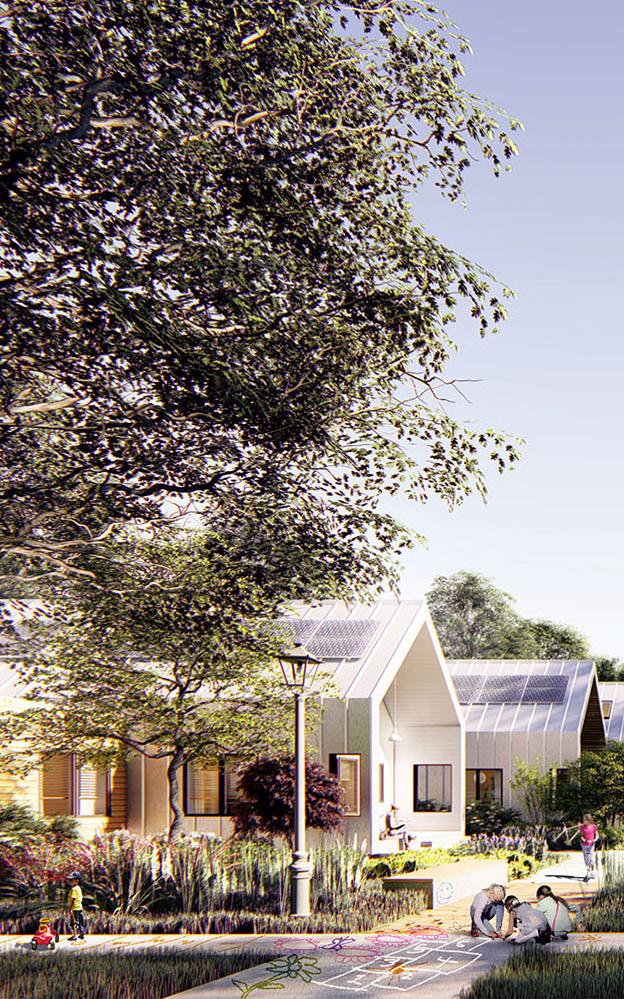
But it wasn’t always like this. Born in 1973, the era during which McLennan came of age as an architect did not view sustainability as a priority. That changed as the 20th century gave way to the 21st, and the full scale of the climate catastrophe came into focus.
To him, it had always been obvious, though, and he had played the role of proverbial soothsayer: a powerful message but no audience
to pay him any mind. That didn’t stop him from quitting a lucrative job at a leading firm and, with a wife and a young child to look after, moving to the West Coast to start his own thing. McLennon began designing buildings that, rather than be carcinogenic, did nothing adverse to us at all; that, rather than emitting carbon into the atmosphere, would help offset it. Who wouldn’t want to have their life tied to a building with no energy bills, no water bills and no toxic chemicals?
, can’t we do these things that nature does?
A case in point is his Bullitt Center, opened in 2013 in Seattle, Washington. The six-story office building is completely powered by solar energy (no easy feat in the contiguous United States’ dampest city). On an annual basis, the building produces more energy than it consumes. Every one of the building’s bathrooms – from the sixth floor down to the bottom –has composting toilets that produce nutrients, with the structure not even connected to the municipal sewer system.

Instead, he says it “operates like a brain,” with sensors all over the building that open and close windows, raise and lower shades, and turn up or dim the lights as needed. It’s naturally ventilated, and the heating only comes on if needed. Again evoking a flower, the building “is trying to find the best conditions to be in.”
McLennan’s vision is catching on. In 2016, he won ENR’s Award of Excellence for turning the Living Building Challenge into a global standard for sustainability in architecture. And the firm itself is no longer in any financially precarious state: McLennan Design with its 10 employees recently merged with Perkins&Will, which, with 2,400 employees, is the second largest architecture firm in the world. McLennan’s ultra-green ethos will be heard far and wide as he offers his consulting services to this juggernaut.
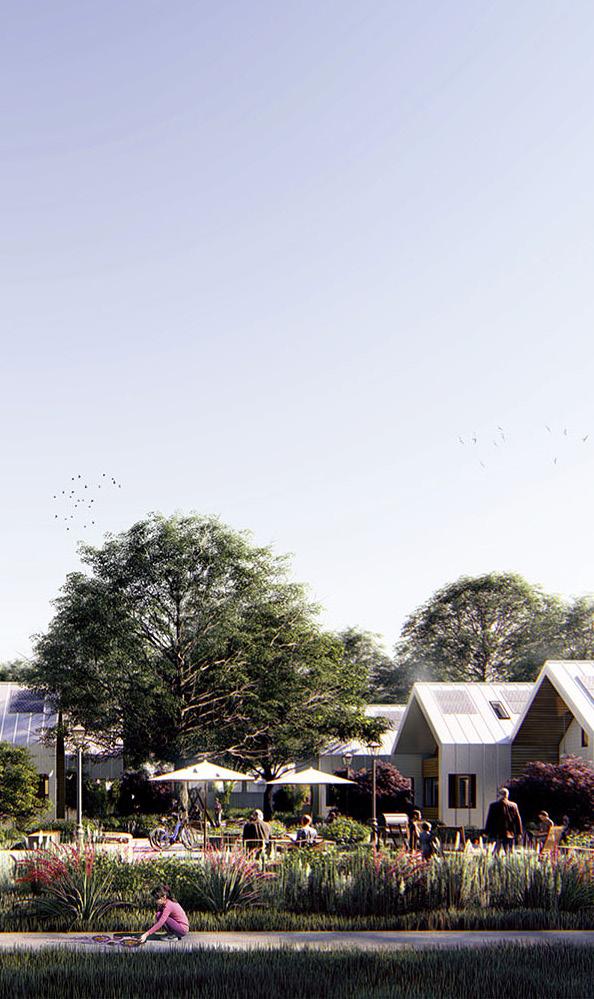 Architectural rendering of McLennan Design's Antioch Village project
Architectural rendering of McLennan Design's Antioch Village project



Q. COULD YOU GIVE US A BRIEF ACCOUNT OF YOUR BACKGROUND?

» My background's in human resources; I've been in HR for over 30 years, spending 10 of those as the Head of HR for different organisations across multiple different industries, including for-profit and not-for-profit companies. Back in 2014, I started my own consulting firm with a focus on not only HR consulting and organisational development, but also diversity, equity, inclusion and belonging. This is a space I've been in since 2007.
Q. WHAT IN YOUR CAREER LED YOU TO THE ISSUE OF DIVERSITY AND BELONGING IN THE WORKPLACE?
» I would have to definitely say it's been my own personal experience in corporate America. Oftentimes I, especially as a leader, was the only one –or one of few – who looked like me sitting around the table making decisions about employees. So my goal was to ensure that anyone who was in that same or a similar situation didn't have a lot of the same experiences that I had. Some of those were based on discrimination and equity, unfairness and fairness, as well as a sense of not belonging.

In a fast-changing workplace, Tana Session’s advice and guidance has proved vital for companies looking to keep up





“PART OF
OF WHAT THE TRUE HYBRID WORKPLACE IS, IS TO UNDERSTAND WHAT PROXIMITY BIAS IS AND HOW IT IMPACTS EMPLOYEES CAREERS”
Watch the video " Why Should You Hire Tana M. Session as Your Coach & Speaker?", interviewed by James Malinchak, star of ABC's Secret Millionnaire.


» All of my clients are trying to figure this out right now. One of the things that I think has happened is a new level of bias known as proximity bias. So those who are going into the office one, two or three days a week are actually viewed as more engaged, more motivated and are assigned to bigger projects. They have more exposure to senior leaders and are able to get promoted faster than those who aren't coming into the office for various reasons. And so part of the understanding of what the true hybrid workplace is, is to understand what proximity bias is and how it impacts employees careers, especially of those we a lot of times marginalised, be it by gender, race, ethnicity, or those who have different abilities.



 PRODUCED BY: LEWIS VAUGHAN
PRODUCED BY: LEWIS VAUGHAN
To operate efficient state-of-the-art colocation data centres, the number one priority for Green Mountain is to have skilled, motivated, and enthusiastic employees who are up for the task. This is the ethos of Tor Kristian, the CEO of Green Mountain. And it is this people-centric approach that has shaped the entirety of Green Mountain's company strategy.
“Whether it is the operations team, project managers, service delivery, sales, management or supporting functions – they all contribute to the same goal: 'Setting the green standard' in the data centre industry.”
According to Kristian, Green Mountain is shaped by four core values: a strong customer focus; reliability and honesty; knowledge; and enthusiasm.
“These values are deeply rooted in our company culture and reflect on anything we do. After all, it is all about the people.”
To delve deeper into Green Mountain’s people-led philosophy, and the importance of the human factor in the running of a data centre, we spoke to four Green Mountain employees, spanning the company’s entire value chain.


“The 100% uptime is a prerequisite in today's market, and at Green Mountain, we have secured it continuously since the start.”
“Our performance strongly relates to the people and how things are being managed as well as the technical features of our data centres.”
Operation Technician, Abhishek Jagga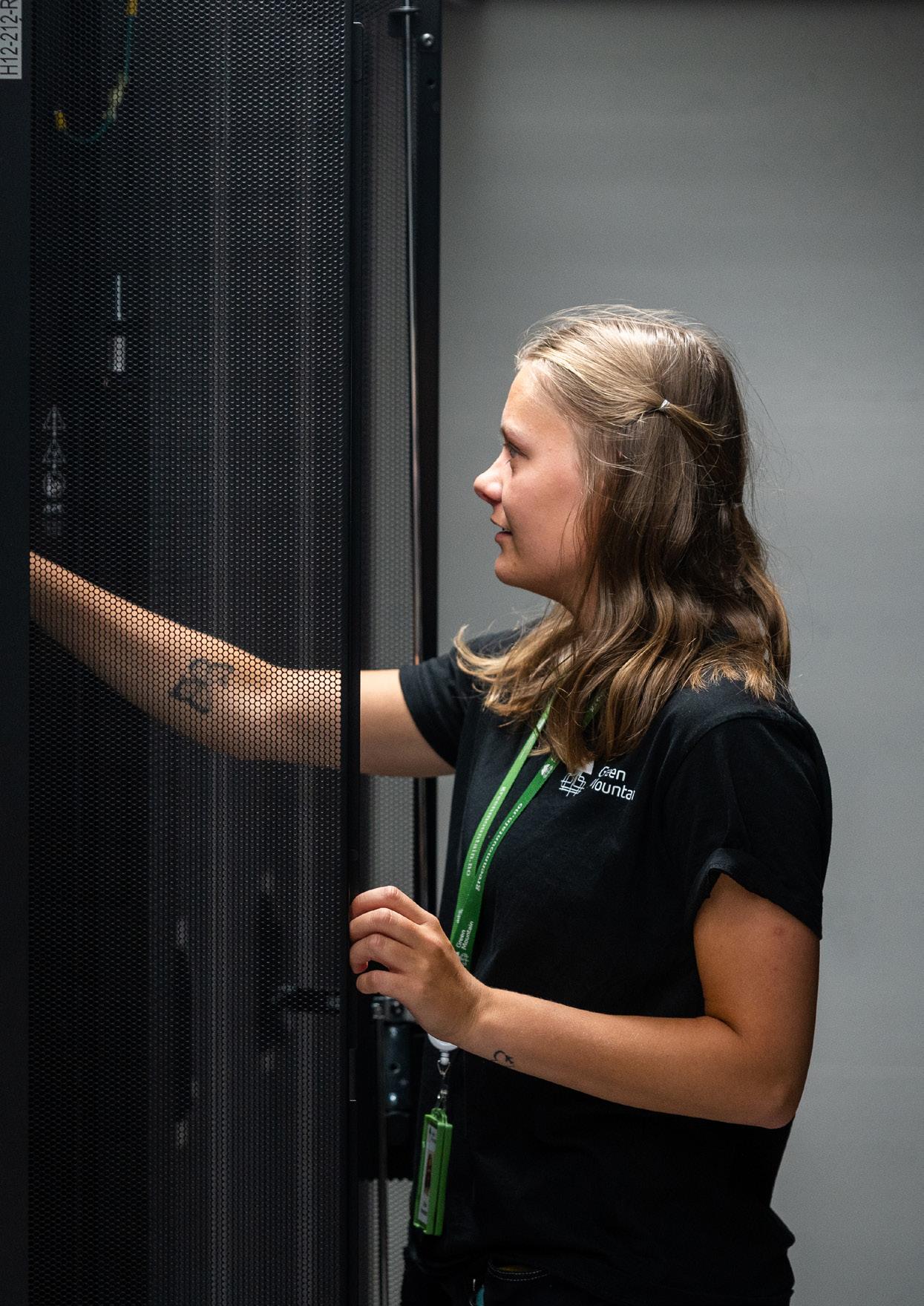
TITLE: CEO
LOCATION: GREEN MOUNTAIN
Although his first responsibility within the company was as CTO, Tor Kristian assumed the role of Green Mountain’s CEO in 2017. Kristian was the second employee of Green Mountain, and has been responsible for developing the technical infrastructure.
He has more than 25 years of experience within data centres and IT operations, and has been involved in several major IT and technical projects. He holds a Bachelor’s degree in electrical engineering, specialising in automation. Kristian is actively involved in shaping the Norwegian data centre industry, both as the CEO of Green Mountain and as a board member of the data centre industry association.

“From a technical point of view, our facilities are designed to be robust and redundant, including duplicated cooling and electrical setups, simple and robust cooling solutions, multiple grid power supply, and automatic standby generators. In simple terms, if one system fails or we need to perform maintenance, another system takes over to deliver the service.”
“In addition, we have comprehensive processes to follow and strong work ethics. These include regular inspections and testing, 24/7 support and constant security to keep our services and machinery up-todate and fully functional. We follow the ITIL process and framework, and are certified according to global standards, such as ISO 9001,14001 and 27001.”
“It all comes down to honouring our commitments to the client, both as a team and an individual employee.”
How do you collaborate with the rest of the operations team to achieve these results?
“As an organisation, Green Mountain is people-centric. We coordinate with each other in the best possible manner.”
“When something new happens, or we start work on something, everyone gets a chance to speak about it and share their views.”
“So because of the flat leadership structure, everyone in the company is able to bring their ideas together. We do regular brainstoriming sessions internally and with our partners to deliver best-inclass services.”
“Green Mountain operates as one entity, where the company values of ‘Reliability & Honesty, Knowledge, and Enthusiasm’ are always appreciated and acknowledged.”

“I think this quote by Theodore Roosevelt represents our culture well: 'No one cares how much you know until they know how much you care'."
What does it mean, for you personally, to work for Green Mountain?
“When I joined the company, about threeand-a-half years ago, we had a quarter of the sites that we have now.”
“The company was at its child stage, and we were raising it from the ground up.”
“I love being a part of Green Mountain because I joined it when it was just a kid,
“To operate efficient state-of-the-art colocation data centres, the number one priority for Green Mountain is to have skilled, motivated, and enthusiastic employees who are up for the task”
TOR KRISTIAN CEO, GREEN MOUNTAIN
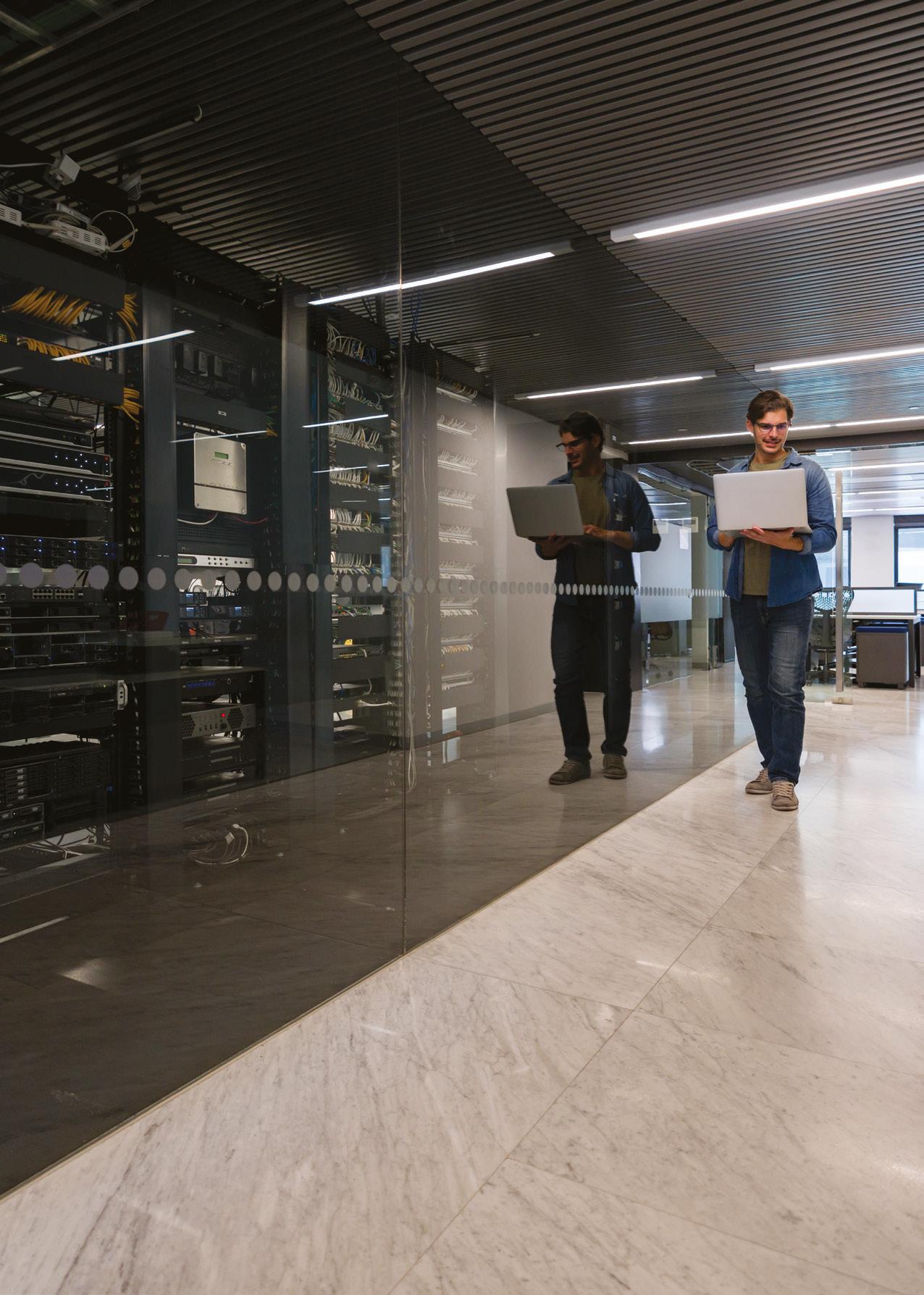
The Green Mountain data center, located on the island of Rennesoy, near Stavanger, Norway, boasts a Power Utilization Efficiency (PUE) rating of 1.2 and has established itself as one of the world’s most efficient data centers. Founded in 2013, and situated in a former NATO munitions bunker, Green Mountain is unique and innovative for several reasons.
Firstly, the data center is powered by cheap, reliable, low carbon hydropower. Secondly, the data center is cooled by seawater from the nearby fjord, and gravity is a key factor in the distribution of that cold water to the data center. By partnering with Schneider Electric, Green Mountain has built a highly resilient and sustainable Tier III certified data center. Its IT room boasts an impressive Power Usage Effectiveness (PUE) of less than 1.2, something which Green Mountain measures and reports on in real-time to its customers.
To achieve this, Green Mountain has implemented several solutions from Schneider Electric’s EcoStruxure™ for Data Centers architecture, including its InRow™ cooling systems, lnfraStruxure™ hot aisle containment systems, Symmetra MW
UPSs, Canalis LV busway, Prisma LV Distribution, SM6 + transformers, MV/ Citect Scada, and Uniflair™ coolers.
Green Mountain also uses Schneider Electric’s EcoStruxure™ IT data center infrastructure management (DCIM) monitoring software to controls a series of mission-critical components, and around 12,000 measuring points, helping it to increase efficiency and resilience across the facility. Further, Schneider Electric also helped design Green Mountain’s cooling system, which uses gravity to bring the cold water from the fjord to its cooling station without using any power or relying on refrigerant gases.
Green Mountain data center customers stand to benefit from this low cost, high efficiency implementation, enabling them to reduce their carbon footprint significantly.

Powered by 100% renewable hydro power and partnering with Schneider Electric, Green Mountain is able to support the critical uptime requirements of its customers, while operating as one of the greenest data centers in the world, with close to zero CO2 emissions.


and now it's maturing towards a sort of ‘teenage’ stage.”
“And it's good to grow with the company, because you learn a lot and, being from an IT background, I see that the demand is rising. We are providing what our customers are looking for and, at the same time, we are also offering genuinely green services.”
“Personally, I am a family-oriented guy, like so many others. And what Green Mountain offers me resembles a family: growing old together, a meaningful vision for the future, great relationships and most importantly, freedom of expression and the work I want to do.”
How do you make sure you have the right person for the job?
“We have developed what we believe is a strong recruitment process. We focus on competence, of course, but what’s equally important is the personality, preferences and motivations of the employee. So, we like to spend time getting to know the candidates, to find out both if this person would like to work for Green Mountain and if this is the correct path for this person.”
“One way to do this is to not only perform interviews but meet the candidates in different settings and different situations.

“I feel lucky to be a part of the adventure, the growth and everything that is happening in our company. When I started here I was included, given trust and made to feel welcome”
IRENE VIKINGSTAD HR MANAGER, GREEN MOUNTAINTHE SCANDINAVIAN MANAGEMENT PHILOSOPHY IN PRACTICEHR Manager, Irene Vikingstad
Not all people are comfortable in an interview setting. Sometimes it is better to do an informal guided tour, let them try some work tasks or do a test. We also have a comprehensive training programme in the Green Academy, to ensure the best support for the right candidate.”

“Another important aspect is to look at the team that the candidate will be a part of. How will the person fit in and complement the strengths and personalities of existing members? We have room for both introverts and extroverts, and it is all about finding the right mix to build a strong team. All of our managers are very involved and engaged in this process, and sometimes we also discuss this with team members, too, before the final decision is made.”
How do you retain high inclusion and diversity standards in your recruitment and retention?
“We have good tools and methods in place to make sure that all candidates are evaluated in the same manner. We never exclude people based on gender, social or ethnic background, age etc. I also believe that a focus on personality gives us more diversity in the organisation.”
“For instance, we have employees of all ages in our company. Some were recruited straight from school without graduate experience, others were recruited when they were in their sixties.”
“When it comes to gender balance, the data centre industry is quite male-dominated. However, we raised the share of female

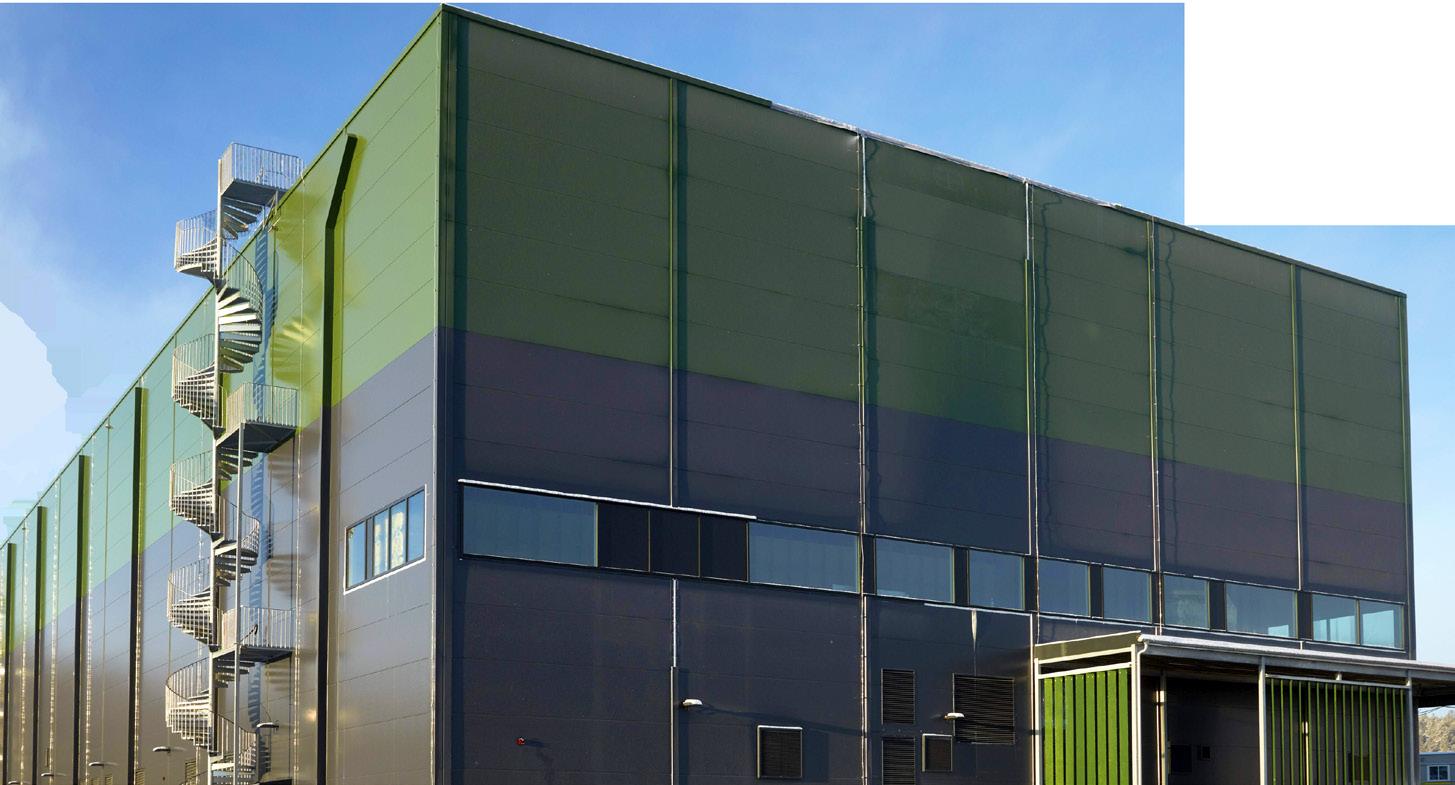


At Green Mountain’s OSL1-Enebakk site, a new 13.5 MW colocation data center was recently completed. CTS Nordics (CTS) was the Design & Build contractor for the project and worked closely with Green Mountain to realize this project despite demanding circumstances.
A special challenge with this project was to create an extremely flexible design. A design that could accommodate enterprises needing standard colocation, all the way to hyperscalers’ needs.


As this was a cooperation between Green Mountain and CTS it was important that the team members trusted each other. Very early in the process, a team gathering was organized so they could get to know each other and create the essential trust between the team members. This way, no one hid away problems or tried to blame each other. Instead, we discovered challenges early and were able to address them straight away.
Long production and delivery times is a global challenge in these uncertain times and it also affected the progress. One solution was to split deliveries, instead of waiting for the components to arrive together. This way, we could perform parts of installations and secure as much progress as possible while waiting for remaining deliveries. In addition, the team tried to mitigate delivery problems by close follow-up of suppliers.
“By involving CTS from the very beginning and establishing a good relationship we got a head start in the project. During design development, the team needed to look at both the master planning and the building to coordinate a viable and efficient solution. It would not have been possible to complete this project had it not been for the cooperation, trust and shared competence between the two parties. At the end, it is all about the people.” says Nils Christensen, CTS.
latency throughout Norway and Europe.
Stavanger-Oslo
• New unique route between Stavanger and Oslo
Norway-UK
• New unique route between Stavanger and Newcastle
• New unique route between Oslo, Kolding/Esbjerg and Hamburg
employees from 14% to 18% in 2022. Now, the biggest challenge we face is to increase the number of female technicians. One of the reasons why this is so difficult is because not enough girls choose the technical subjects in school. That is why we start early and try to cooperate with educational institutions, to promote this career path and connect students with our female role models within the industry. In time, I think we will get there. This summer, half our summer interns were female, so that is definitely a good start.”
“In general, we believe that a broad diversity and a variety of personalities create better results.”
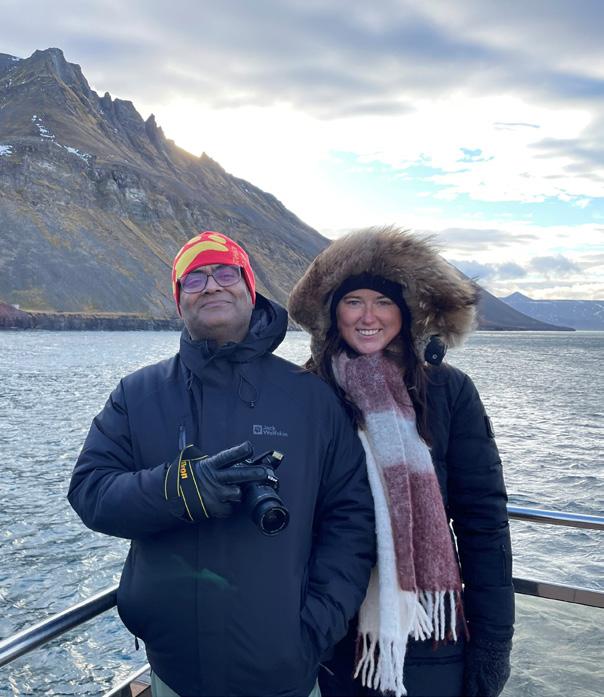
“This philosophy is known to be focused on equality between employees and managers, and a down-to-earth mentality. Management involves their employees in decision-making, and there's a flat management structure. It’s a democratic, non-bureaucratic and collaborative way of managing.”
“This means that all employees are very enabled and very empowered. They can be creative, innovative and are able to make their own decisions for the best of the company. Then, with this level of trust established, a manager would expect an
employee to take responsibility.”
“A key part of this is ‘psychological safety’, which means employees know that, if they do speak up, if they do engage and make decisions, there is room for mistakes. After all, we learn from mistakes.”
“We actually see the Scandinavian management style as a competitive advantage. It makes the whole organisation more productive, innovative and profitable.”

“For me, it's important that our customers are satisfied. If a customer isn't satisfied, then I don't see the point of doing what we do.”
“So keeping the client satisfied is my number one priority. I would hate going into meetings and talking to clients if my job was to only put out fires!”
“My approach is, there’s this saying that ‘in order to treat everyone the same, you have to treat everyone differently”
RIKKE DISHINGTON SERVICE MANAGER, GREEN MOUNTAIN
“And how to do so? One vital element is that every client has a dedicated contact person in the Service Management team. A person they can contact about anything and who knows their business and needs. No matter the size of the client, we build trust through this one-to-one relationship with them.”
“However, there’s this saying that ‘in order to treat everyone the same, you have to treat everyone differently'. And that's what I've been using as my go-to quote when managing clients. Because clients are different. They are different companies from different industries with different backgrounds and different
needs. So, in order to keep them satisfied, we have to be flexible. We have to be able to adapt and to get to know them and really listen to what they have to say.”
“Our vision and our values are our DNA. As a company, it should run through our veins and should feel as natural as breathing. So as a client, you can expect to see that demonstrated in whoever you talk to at Green Mountain.”
“Our mindset is customer-focused, and we always see things from a customer's

“When something new happens, or we start work on something, everyone gets a chance to speak about it and share their views”
ABHISHEK JAGGA OPERATION TECHNICIAN, GREEN MOUNTAIN
perspective. When talking to us, you should always feel that we have got your back, and that we are on your team.”
“To do so, you need to have a foundation of trust, and to create trust, you have to be reliable and honest.”
“Transparency is really the key. For instance, we have created a reporting system - called Green Peak - where we share live and historical data with our clients. This way they always know what is going on in their data room environment. In addition, we also produce monthly reports on access management, incidents, changes and so on.”
“There is no sweeping under the carpet
Green Mountain uses
100% renewable power across its entire portfolio of sites, making it amongst the world’s most sustainable data centre providers.

- we are open and honest. And hopefully, they will find us knowledgeable and enthusiastic as well.”

Green Mountain is setting the green standard. Why is that industry leadership position so important to the company?
“To answer that, I think we have to go back to 2009, when the company was founded.
“Green Mountain was really founded on the idea of creating the world's most
so you can focus on your business

Access to our expertise 24/7 Get access to our expertise and Coromatic’s Nordic network of service technicians, specially trained to take care of all types of critical infrastructure.

A service agreement with Coromatic guarantees high availability 24/7/365 with a technician on site to take action according to the agreed service level – around the clock – all year round.
WATCH OUR CASE VIDEO NOW
sustainable data centre. And I think we achieved this very early on. Still, we realise that this is something that we need to continue to focus on every day, especially when the company is growing.”
“That's why setting the green standard was introduced as the company vision, and it really represents the backbone of the value proposition that Green Mountain has in the market.”
From the perspective of your employees, how are they working to maintain this sustainability leadership?
“Sustainability is really well-anchored in the management of the company, and also in the board of the company. And I think that's the perfect setup for creating a culture-based sustainability practice. All our
individual employees know our sustainability goals, which makes it easier for them to contribute and make a positive impact in their everyday work.”
“My role is to lead, coordinate and support the sustainability efforts of all the people that work in Green Mountain, so that we can use each other’s skill sets, and keep sustainability high on the agenda at all times.”

Where do you see your sustainability strategy heading in the next five years?
“We are committed to upholding our ambitions in the sustainability space. I think any companies that do not take sustainability seriously will be out of business, in the near future.”
“Setting the green standard means that we are willing to be at the forefront, to make
investments and put resources in to develop Green Mountain, of course, but also the industry as a whole.”
“There are a lot of challenges ahead, and these are issues that we are addressing in our sustainability strategy. We are working on several different solutions to mitigate our impact, on both the climate and nature.”
“It remains very important that, for everything we do, we do it in collaboration with our own employees and our value chain.”
For Green Mountain, fostering a peoplecentric company culture is all about developing relationships, building and maintaining trust, and creating a supportive environment in which all employees are able to flourish.
“I feel lucky to be a part of the adventure, the growth and everything that is happening in our company. When I started here, I was included, given trust and made to feel welcome,” says Vikingstad.
“I love the work environment and the culture in Green Mountain. It makes me proud to be part of such an inclusive company.”
“At Green Mountain, we share, we trust, we talk to each other. Our team is always open to communication. We are always comfortable to discuss anything that we don't understand, like new technologies, or what to do if something goes wrong,” Jagga adds.
“So that's what I believe the company’s core foundation is - to believe in, trust in and deliver on what you say.”
And, as the company itself maintains a rapid pace of growth, its employees are able to take part in the opportunities that come with it.
“The company culture in Green Mountain is very much about trust, openness, and a

positive approach to people. This gives all the employees in Green Mountain a lot of opportunities to develop as a person, and also to develop ideas and skill sets as the company grows and moves forward,” Follaug adds.

“For me, I started working at Green Mountain when I was very young. I was 19, turning 20, and I've been here for four years now. So I feel like we've been on this journey together, where we've gone from a small, newly established company, to where we are now, having established a reputation in the industry, and being in a position where we are taking the lead and setting the standard,” says Dishington.
“Along the way, I have also grown both professionally and personally. I am very grateful for all the colleagues who have supported me and shared their knowledge and experience. I have been given a lot of opportunities in the company, and can’t wait to continue the journey.”
“It remains very important that, for everything we do, we do it in collaboration with our employees and our partners in the value chain”
TORKILD FOLLAUG SUSTAINABILITY MANAGER, GREEN MOUNTAIN








As the world of business has become more concerned with administering itself according to the principles of environmental, social, and governance (ESG) criteria, so has B Corporation (B Corp) certification become one of the leading ways in which companies can show that they are in compliance.
What is B Corp certification? In a few words, it is the most shockproof, standardised certification that a company can get to prove to customers, investors and employees that it abides by goals embedded in ESG standards –or, in the words of one advisor, that a company is “running a tidy shop and leaving no stone unturned”. Thoroughness is the name of the game, and it seeks to be a force against the tide of lip service and greenwashing.
First, a bit of backstory: B Corp certification is designed for for-profit companies and is administered by B Lab, a globe-spanning non-profit that has offices in the US, Canada, Europe, Australia, and New Zealand, as well as a partnership with Sistema B in Latin America; note, too, that it is distinct from the legal term ‘benefit corporation’, which is also often shortened to ‘B Corp’. To achieve the certification, companies are rated on a number of metrics – the five core
B Corp has fast established itself as one of the foremost ways of proving your ESG bona fides.
But
limitations lay in
for those who choose that route?
What if resiliency isn’t about withstanding today but envisioning tomorrow?

three years.

Growth for B Corp certification has been brisk: since being founded in 2006, there are 5,697 certified corporations in 185 industries and across 85 countries (as of September 2022).

A noble cause, certainly, and one that’s also looking to be an enduring facet of the business landscape. But what does it actually entail? How must companies adapt their operations in order to become B Corp certified?




One commentator points out that there is a certain type of company that is more

“
It is the most shockproof, standardised certification that a company can get to prove to customers, investors and employees”
RICHARD JOHNSON AUTHOR & CONSULTANT, ENTREPRENEURSHIP & SUSTAINABILITY




RICHARD JOHNSON AUTHOR & CONSULTANT, ENTREPRENEURSHIP & SUSTAINABILITY
“[Certification] arguably suits larger companies, with more established processes, than it does scrappy startups”

they spend a lot of time going back and formalising their processes before they can certify, or may not score as highly as they hoped.”

Still, he maintains that achieving B Corp certification is an end worthy unto itself: “The act of going through the certification process is hugely beneficial in itself. The assessment is essentially a benchmarking tool that has been crowdsourced from some of the leading responsible businesses over the last 15 years. It’s like selfguided consultancy. It gives you a pretty comprehensive picture of all the things that every responsible company should be thinking about, and then tells you how you are performing compared to others/ best practice - this is hugely valuable.”
The process, though, is not without its drawbacks. Arowana is an Australia-based investment firm specialising in electric vehicles and sustainability that can boast B Corp certification. I asked Benn Lim, the group’s chief operating and impact officer, about the limitations with which certification might be fraught. He points to the fact it’s time and resource intensive as well as the bottlenecks that have become
more common as certification has become increasingly popular. Lim notes the limitations on operations: “Undertaking the B Impact assessment requires a company to commit time and resources – the return on invested time is not immediately evident. Furthermore, attaining B Corp certification is a deep-rooted change



“[B Corp] is as much about evidencing the good work you have done as it is the good deeds themselves”
RICHARD JOHNSON AUTHOR & CONSULTANT, ENTREPRENEURSHIP & SUSTAINABILITY
in management process that requires stakeholder management and buy-in at all levels within an organisation.”


Speaking on the inherent bottlenecks, he mentions that Arowana’s certification was delayed by twelve months, “because of the sheer volume of new companies on top of those recertifying with B Lab.”
Despite this, there is no doubt in his mind that it was worth the effort:

“Securing and retaining B Corp status has undoubtedly made us more competitive.


“What has been particularly noticeable is the increasing number and quality of unsolicited inbound requests for engagement, from talent that wants to work for us to companies that specifically seek out investment from us over other investment firms, as well as capital seeking to co-invest with us.”

WRITTEN BY: HELEN ADAMS
PRODUCED BY: CRAIG KILLINGBACK


Sanofi is a one-of-a-kind pharmaceutical company for the modern age. Self-described as ‘pushing the frontiers of science’ and ‘chasing the miracles of science to improve peoples’ lives’, the 100,000-plus employee company delivers ‘life-changing treatments and life-saving vaccines’ to patients around the globe, in more than 100 countries.

The man in charge of the entire strategic sourcing and shipping process for the pharma company is Arnaud Dourlens, Head of Clinical Supply Chain Operations, who also oversees worldwide trial supply.
At heart, though, Dourlens is an engineer. He began his career in the FMCG (fastmoving consumer goods) industry, working for giants Procter & Gamble. Later, he moved into the luxury sector – the domain of beauty powerhouses such as perfume and cosmetics’ leader Christian Dior.
“For more than 10 years, I worked across operations, the supply chain, new product launches, and industrialisation – first in the makeup area and then in every cosmetic area, meaning makeup, fragrances and skincare,” outlines Dourlens.
In 2017, he switched to Sanofi as Production Director and embraced the pharmaceutical environment. During this period, Dourlens was based at the Compiègne site, in Northern France.

“It’s quite a strategic site here,” says Dourlens. “I led the team on the road of site improvement and transformation to be fit for the future.”
Dourlens joined Sanofi because he was passionate about the pharmaceutical field and had experience in demanding, highadded-value environments.
“I was proud to have worked in the luxury sector, making it possible for people to be even more beautiful than they are, thanks to makeup and cosmetics,” says Dourlens. “But being a part of a journey where you are allowing patients to access treatment, to
change the life of some people on a daily basis and improve their wellbeing may be a bit less trendy, but it’s so important.”
Dourlens joined the pharma’s Clinical Supply Chain Operations in Montpellier in 2020, during the COVID-19 pandemic, in this period of chaos, it was up to Dourlens to ensure the business continuity.
“That was not easy,” says Dourlens. “As Global Head of Clinical Supply Chain, I'm heading the world supply chain of Sanofi’s clinical development – overseeing more than 300 clinical studies, making sure that we are delivering their investigational

“More than ever, the level of uncertainty we have in the worldwide clinical supply chain is just incredible”
ARNAUD DOURLENS HEAD OF CLINICAL SUPPLY CHAIN OPERATIONS, SANOFI
treatments to all the clinical patients, either at home or at hospital.”
Dourlens believes that the clinical trial supply chain can be a source of value for patients and the healthcare sector.
“When a patient is suffering from a disease, he or she is in a tough situation and clinical trials are an option of care for him or her,” explains Dourlens.
Behind the clinical trial, there are a lot of activities that are happening around
TITLE: HEAD OF CLINICAL SUPPLY
CHAIN OPERATIONS

COMPANY: SANOFI
INDUSTRY: CLINICAL SUPPLY CHAIN
LOCATION: FRANCE
Arnaud Dourlens is an "Arts et Métiers" engineer. He began his industrial career in the FMCG sector where he held growing responsibilities. Then he joined the LVMH group where he reorganised new product launches and industrial investments in the Make-up segment .
Arnaud joined Sanofi in 2017 as Production Director of a major production site (> € 2.5bn turnover). He has been a key player in the development of the continuous improvement mindset and in the transformation of the site through IT projects, investments and activity growth.
Since 2020, he has been the global head of Sanofi Clinical Supply Chain Operations, managing worldwide clinical supply teams involved in more than 300 clinical studies.

40% Average drug waste reduction
30% Average supply cost savings

2-6 Months reduction in time to market
100% Patient service level
N-SIDE Life Sciences VP Sébastien Coppe explains how leveraging data & AI can streamline clinical plans, accelerate trials, mitigate risks and curb waste
N-SIDE combines deep clinical supply chain expertise with advanced mathematics, packaged into solutions to optimise the entire clinical trial supply chain by taking a global view and making data-driven decisions at every step.
“N-SIDE has been building extensive expertise over the past 20 years in empowering supply chain management in clinical development through advanced analytics and AI,” says Sébastien Coppe, N-SIDE Life Sciences VP.
Pharma companies of all sizes use the N-SIDE Suite, an intelligent SaaS solution, to avoid supply chain bottlenecks, minimise waste, control costs, reduce time-to-market, speed up the initiation of new trials, manage production plans, monitor supply chain strategy for ongoing trials, and support commercial launches. Pharmaceutical and healthcare company Sanofi started a strategic partnership with N-SIDE five years ago to digitalise their clinical supply chain.
This has led to impressive outcomes for their supply chain efficiency.
The N-SIDE Suite consists of the Supply App, for risk-based clinical supply optimisation; the Production App, for building and maintaining an optimal manufacturing strategy; and a comprehensive slate of BI dashboards and expert services.

The N-SIDE Supply App helps pharma companies optimise their supply chains throughout the trial lifecycle. It allows them to make data-driven decisions about issues including overage, packaging, sourcing, IRT setup, and depot shipments, in a smart and interconnected way. With more than 12,000 trials optimised, N-SIDE’s Supply App can be used to design and optimise any trial of any size and complexity.
“Globally, when you consider what happened during and after the Covid pandemic, we’ve seen a lot of good changes backed up by AI technology, leading to really faster clinical development activity,” says Coppe.


defining a protocol, defining the way in which the study will be carried out, and the way that the data will be managed.
“The main thing that the patient will see when they are included in a Sanofi clinical trial will be the treatment. The patient will see the investigator, the physician and the hospital staff who will take care of them, but no one from Sanofi,” said Dourlens.
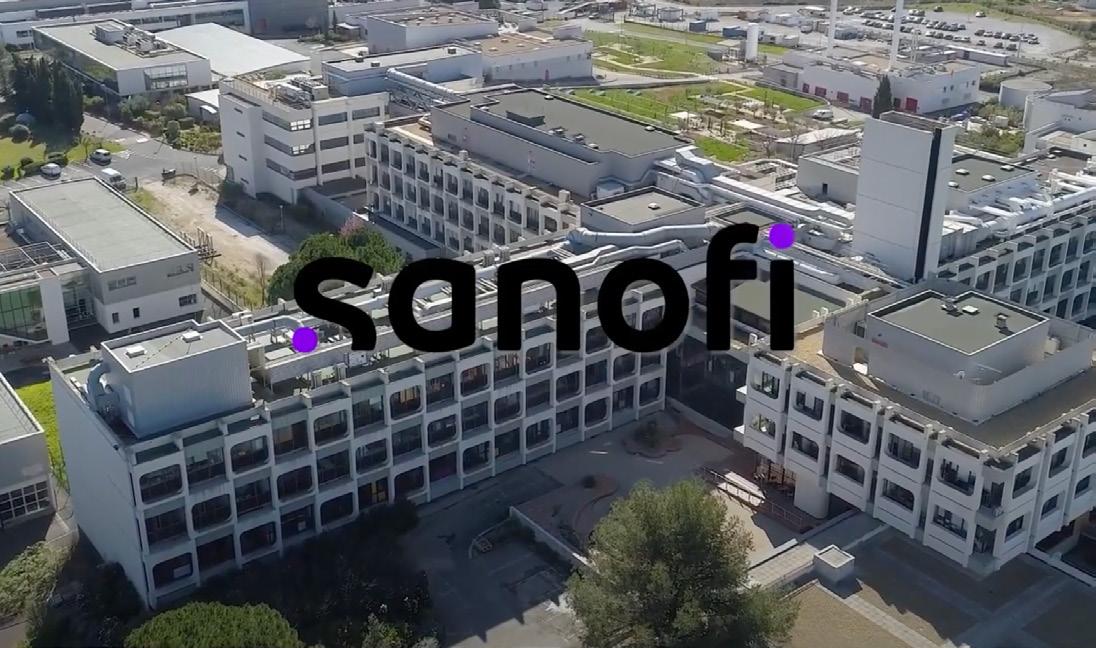
Yet, the treatment that the patients will get – when they receive a box of drugs or vaccine designed to either save or vastly improve their life – comes from Sanofi. It’s Dourlens’ team’s job to get the drug to the
patient on time, whatever the situation.
“We have been experimenting with our supply chain for years, during both the COVID-19 pandemic and Russia’s invasion of Ukraine,” says Dourlens. “We were still able to continue to supply almost everywhere during the pandemic.”

So, how did managing the COVID-19 clinical supply chain compare to supporting it after Russia’s invasion of Ukraine?
“Many patients have been in a terrible situation due to the war, but even more so when expecting a life-saving drug that it isn’t possible to receive.”
Sanofi is creating value in its patientcentric care by thinking about the patient in these types of extraordinary circumstances, devising ways to overcome situations such as war or pandemics.

Part of this is the company delivering drugs to patients’ homes, alongside a nurse where necessary: “Sometimes a patient is very far away from the clinical site, so a nurse's visit with the medicine allows easier access to the clinical trial.”
This reduces the burden of the trial on the patient, something Sanofi is very proud to facilitate. But it’s the supply chain itself that’s
responsible for making this easier for both the nurse and the patient.
“By reducing the number of trips back and forth to the hospital, we’re supporting healthcare staff and patients. But it is down to the patients to make sure that they are taking their medicine on time.”
If we think about value, we have also to discuss a bit about trial design. “When you have a clinical trial, you’re able to influence the trial design to make sure that you limit the risk of shortage and wastage,” explains Dourlens, who, in his role, has the job of optimising the capacity in supplying the trial.
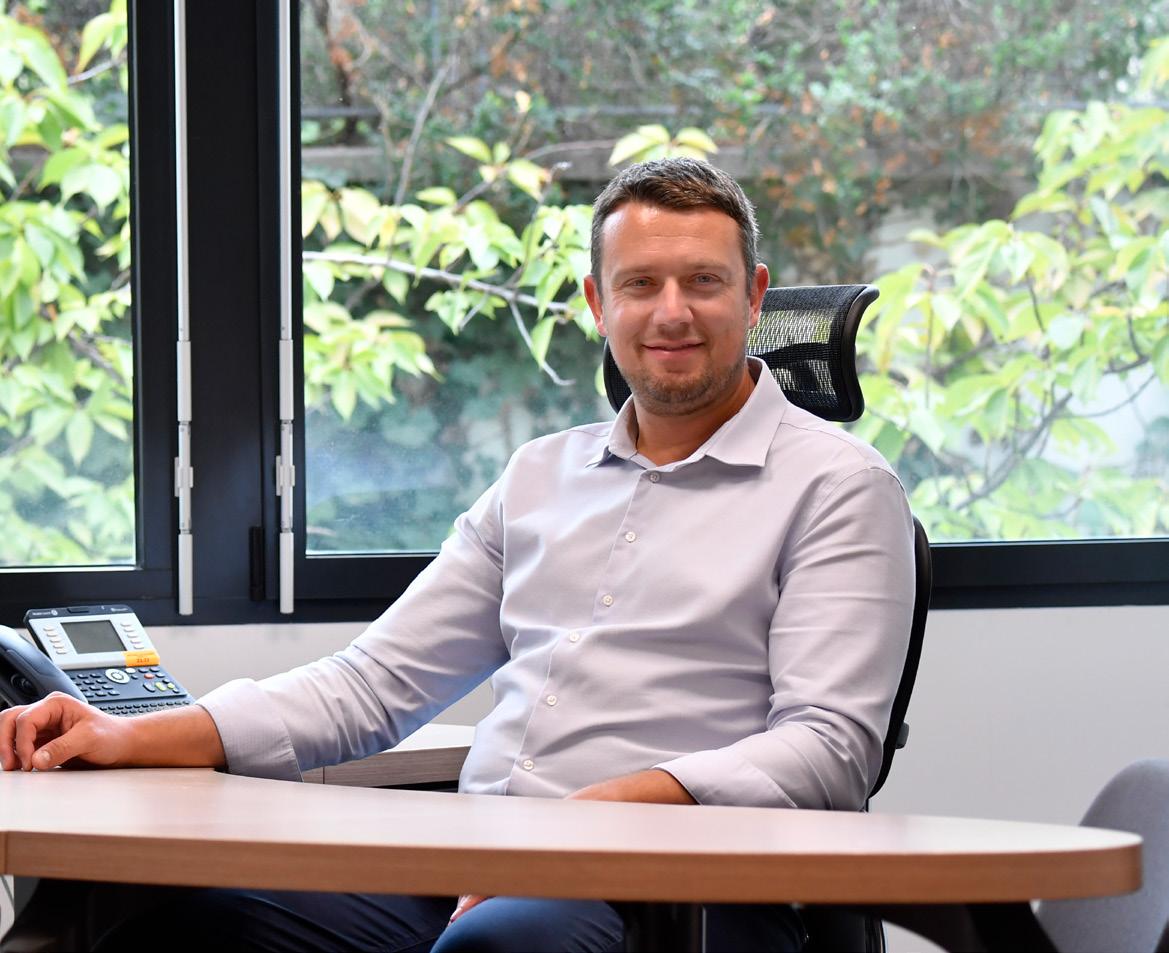
The healthcare sector is aware that it is moving into an era where the cost of drugs and products is high, due to supply chain complexity, in addition to the development of drugs. The clinical supply chain has the ability to influence the way Sanofi performs the trials – something Dourlens’ team is working on each day.

“We know that, in the near future, trial design is going to be more and more complex,” he says. “We will be adjusting the design in the course of the trial, depending on the results; it's what we call adaptive trial design.”
Sanofi’s supply chain must have the agility and flexibility to follow the changes it hopes to enact, though there are analytics tools on-hand to improve productivity, resilience and sustainability.
“To have an important impact and run successful, innovative therapies, we must avoid bottlenecks linked to drug supply and we must then guarantee that the treatment is available to the patient as quickly as possible,” says Dourlens.
“We’re not getting drugs that are similar for everybody; this is a tailor-made supply chain. I like to say that it’s an haute-couture
“The world has changed over the past two years –in the supply chain, in the clinical supply chain, and across the pharmaceutical supply chain”
ARNAUD DOURLENS HEAD OF CLINICAL SUPPLY CHAIN OPERATIONS, SANOFI
supply chain. This is where digital healthcare is really able to provide the required end-toend traceability.”
Whatever the production is – internal or external – and whatever the geography level, digital is helping to make sure Sanofi is tracking all drugs everywhere in the world, at each step of the process.

Clinical trials are happening in quite a complex landscape, because each country has its own specific regulations. Depending on the design of the trial, Dourlens’ team may have different requirements to meet, such as importation and exportation rules. The number of changes, from a regulatory perspective, in the worldwide environment is huge.
“To make a long story short, regulatory complexity and varied trial design is a big challenge. Digital healthcare is a great help in making sure that we are within these constraints in the right way,” says Dourlens.
€40bn turnover per year
100K+ number of employees
60+ sites across the world
From an integration and cost-optimisation viewpoint, digital healthcare is also important. Today, nobody is able to run a full supplier clinical trial end-to-end without any partners. Therefore, a smooth and efficient integration becomes a must.

“When we start speaking of partners, we start speaking of making interfaces, and
when we speak about interfaces, we speak about exchanging data. The level of platform integration thanks to digital development is also key. If you have a nice digital ecosystem internally, but you don't have the proper level of connection with all the players that are contributing across your value chain, you’re not fully leveraging the efficiency of your digital system,” he says.
To perform in the global clinical supply chain, there are some core activities that are part of the internal expertise of Sanofi: optimising the design of the trial from a supply perspective, the logistics setup, packaging design, and, ultimately, the needs of the patient.
There are, however, some other areas where Sanofi relies on partners due to their greater expertise and experience with a
“When a patient has a disease, they’re in a tough situation. Clinical trials are an option of care for them”
range of customers. Put simply, these partners are able to offer services that are complementary to internal ones.
One of these integral partners is Fisher Thermo Scientific, with whom Sanofi has worked for a number of years – though a partnership devoted to the US market was only agreed two years ago, which specifically focuses on the subcontracting of packaging labelling and distribution activities for certain studies.

“We are relying on them mainly to supply everything that is manufactured in the US and then distributed worldwide for studies,” says Dourlens. “We're reaching a level of maturity and interaction between the teams in terms of development that is really high.

By reducing the number of trips back and forth to the hospital, we’re supporting healthcare staff and patients”
ARNAUD DOURLENS HEAD OF CLINICAL SUPPLY CHAIN OPERATIONS, SANOFI
Thermo Fisher Scientific has been helping us in our journey to make sure that we deliver the drug at the right time – any time – but also, that we're doing it at the right cost with the right level of optimisation.”

Any partnership requires trust because it is a vital ingredient, but for the healthcare supply chain, it is absolutely crucial.
“In a partnership, nothing happens without trust,” says Dourlens. “The second ingredient is to make sure you have a partnership based on a common interest: in a good partnership, there cannot be somebody who is winning and somebody who is losing.”
Over the next year at Sanofi, Dourlens highly expects the world to change again.
“More than ever, the level of uncertainty we have in the worldwide clinical supply chain is just incredible,” he says. “The world has changed over the past two years –in the supply chain, in the clinical supply chain and across the pharmaceutical supply chain.”
Here, the level of flexibility and agility is essential to be able to adapt for the supply chain. Yet, as the world has changed, Sanofi has also grown more resilient – so much so that managing a complex supply chain is Dourlens’ 2023 goal.






Yet, despite this pronounced gender gap, 74% of school-aged girls show an interest in a career in a science, technology, engineering,
The issues don’t stop there. According to a recent study from WeAreTechWomen, 75% of women working in tech say that they don't feel like they receive adequate support and respect from male colleagues, and two thirds of the respondents feel unheard in meetings.






educators. Empowering students. Explore how we accelerate student discovery, learning and innovation with our Digital Education 3D Experience.


The value of including more female perspectives – not just for women in the field, but for all users and the entire sector at large – within technology companies is illustrated perfectly by the case of female voice assistants.

We all know what it’s like to get frustrated with Siri. After repeatedly failing to get the device to play a specific song, we might give up and say “forget it”, or even snap, telling it to “shut up.” Your first reaction to this might well be, “what’s the harm? It’s not like we’re losing our temper with a real, human woman.” Well, it turns out that there are specialists who have suggested that the tone, phrasing and set responses of female mobile phone voice assistants are inherently problematic. Their passivity, complicity and



politeness – it is argued – further gendered stereotypes and are markedly different from that which we see in male voice assistants.

One of the first digital reports to raise this issue came from UNESCO, in collaboration with Germany and the EQUALS Skills Coalition, in 2019.
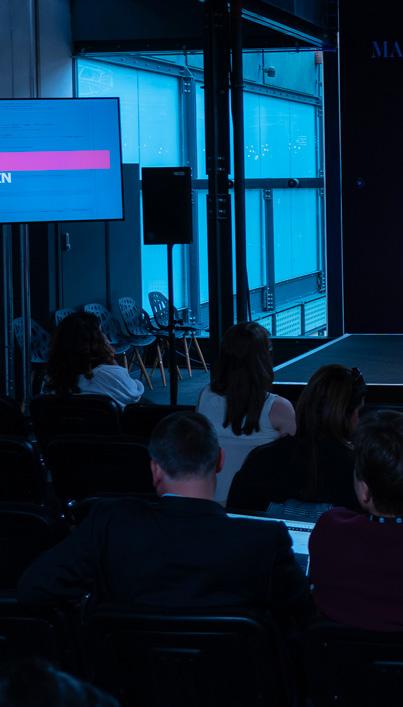
The report heavily criticised the submissiveness of Siri, particularly in regards to its responses to sexual harassment. It stated that such a response, and the characteristic servility of female voice assistants, “provides a powerful illustration of gender biases coded into technology products, pervasive in the technology sector and apparent in digital skills education.”



“The thing about technology is that it seems harmless. We think of tech as neutral, right? But, what that does when the voice of an assistant – whether it be Alexa, Google






Since the start of the pandemic, 34% of men versus 9% of women received a promotion, Meawhile 26% of men versus 13% of women got a pay rise





Treating female voice assistants with derision is common. And what’s worse, many critics have challenged the way that these female voice assistants are designed to be subservient and provide humble, obedient responses – even if the user is being aggressive or making sexist remarks.

“I don't know about you, but I've actually gotten visibly upset when I've heard some


of my male friends yelling at Alexa when she doesn't do what she's supposed to do, because it normalises abuse,” Karlin explains.
“So why is this the case? It is an example of a lack of inclusion in product design.”
The absence of diverse perspectives –what do we stand to lose?

For Karlin, this example is deeply indicative of a much wider industry trend.
“When it comes to technology, we have a responsibility to design products that are inclusive and don't perpetuate harmful norms, like the woman as the assistant. But unfortunately, that's not what we see happening.”
Delving further into the field of AI, around one in four people working in this sphere is a woman.
“So, that means that the people designing these products are men. I'm not saying men can't be empathetic and appreciative. But, it means that there are not enough people with differing lived experiences that are designing these products, who can say, ‘Hey, how about we don't design this for the default setting (white, western and male)’,” Karlin outlines.
SAMANTHA KARLIN CEO, EMPOWER GLOBAL
“ We have a responsibility to design products that are inclusive and don’t perpetuate harmful norms, like the woman as the assistant”
Figures show a marked imbalance of promotions when it comes to men and women working in senior roles. This trend increased from the start of the pandemic, when 34% of men versus 9% of women received a promotion, and 26% of men versus 13% of women got a pay rise.

The gap is evident, and trends like these only threaten to widen it. But, unless greater support is given to women looking to pursue a career in tech, there will be an almost complete uniformity of perspectives among those involved in high-level discussions.
“It's not that men are not thinking about these things, but they don't have the lived experience necessary to draw those correlations,” Karlin explains.

“We need to understand that even if technology can be a force for good, it can also easily be weaponised. And something that is normalised within our society is the abuse of women.”
Karlin urges that, when designing and developing technical products, worst case scenarios have to be considered. There are those who will seek to weaponise technologies, and we need to create measures that will protect vulnerable users against risks. One of the most concerning and widely cited examples of a failure to do so is that of social media.

“If you haven't seen the rates of teen suicide and depression in correlation to Instagram, it's shocking. In one study, it was revealed that, for girls who spend more than three hours on social media a day, 37% of them are likely to self-harm,” Karlin outlines.
In this case, empathy is clearly at odds with the financial model of the platform. The usage of the infinite scroll UX design, coupled with exceptionally sophisticated engagement algorithms, ensure users remain on the app for as long as possible. In this way, as Karlin


“ We need to understand that, even if can be a good easily weaponised And something that is normalised our society is the abuse
SAMANTHA KARLIN CEO, EMPOWER GLOBAL
asserts, feelings of helplessness, hopelessness, poor self-esteem, depression and anxiety were all being enhanced by Instagram.
“When our society becomes a place where technology is used to destroy young women’s self-esteem, to cause suicide, and to perpetuate harmful norms, we are failing as a technical community.”



By assessing and improving the interrelationship between ethics and technology, the industry can work towards a new ethical framework –which, Karlin states, is something that is starkly absent from within the industry.



Firstly, according to Karlin, part of this is about asking ‘better questions.’ Rather than giving sole voice to purely profit-led questions, a feminist approach to leadership requires leaders to evaluate the ethical implications of a product, before it is brought to the market.
“The purpose of capitalism is profit. They're not taking a pledge to say we want to do public good,” Karlin asserts. “So, we need people within the companies to ask these questions, because of the VCs and the board members who all come from the private sector –including the female board members – there are very few social impact leaders.”
For Karlin, feminist leadership can be defined by a humanitarian, people-led approach to technology, which she believes will bring about a much-needed ‘ethical revolution’ within the industry.
“We need ethical leadership and we need feminist leadership. And when I talk about feminist leadership, it’s not leadership predicated on hating men. Feminist leadership is about valuing people over profit. It's about protecting people on the planet,” Karlin outlines.
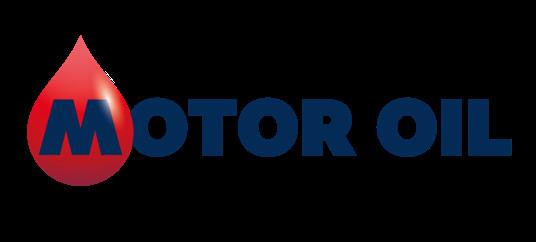


Greece's Motor Oil is taking decisive action to address climate change and help the world transition to a more sustainable way of using energy. With a strong track record in the energy sector, spanning over 50 years in Greece and the Eastern Mediterranean region, the company is well-equipped to guide the industry towards a brighter future.
Motor Oil's ambitious plan to transition to a new energy environment includes dynamic targets and is the largest of its kind in Southeastern Europe. As the company looks towards 2030, it is clear that Motor Oil is committed to driving positive change in the energy industry.

Founded in 1970 – and marking the launch of its refinery in Corinth two years later – Motor Oil has built a Europe-leading role for itself in the sectors of crude oil refining and the marketing of petroleum products in Greece and the greater eastern Mediterranean region. The company’s workforce of more than 2,500 supplies customers with a wide range of high-quality products and exports to more than 70 countries.
“The question I ask myself when I wake up is: ‘What makes me feel like I want to jump out of bed and come to the office?’,” says Nick Giannakakis, Group Chief Information Officer at Motor Oil. “And the answer is that I am driven by the proposition. It’s the

promise I give to all my colleagues that I will equip them and enable them to do their jobs with technology and accomplish missioncritical priorities. This commitment then cascades down to my direct reports and on to the entire technology community in this large-scale organisation.”
A graduate of the International Institute for Management Development (IMD) in Lausanne, Switzerland, Giannakakis has a Bachelor's degree in physics, a postgraduate degree in industrial systems administration and over 15 years of experience in executive roles in the field of information technology. He has worked for several well-known multinational organisations, and, in 2021, he was recognised as one of the top 100 Chief Information Officers.
Giannakakis says he and his team take pride in the way they have helped support Motor Oil in its new organisational strategy. “We’re very proud of how we innovate and what we can digitise at one of Europe’s
largest industrial operations with solutions like predictive maintenance.
“There is also a lot to be proud of in the work we’ve done in the retail sector and how we have launched one of the largest EV charging solutions in this part of the world,” says Giannakakis.
“And last, but certainly not least, we are proud and pleased with the work regarding sustainability. To give you an idea, when I joined the organisation three years ago, our renewable footprint was quite low,” he says. “Today, we are maybe the second largest renewable producer in this part of the world, and this is also part of our contribution.”
Motor Oil is a publicly traded company, listed on the Athens Exchange since 2001. It is included in several indices, including the Athex Composite Share Price Index, the FTSE/Athex Large Cap index, the MSCI
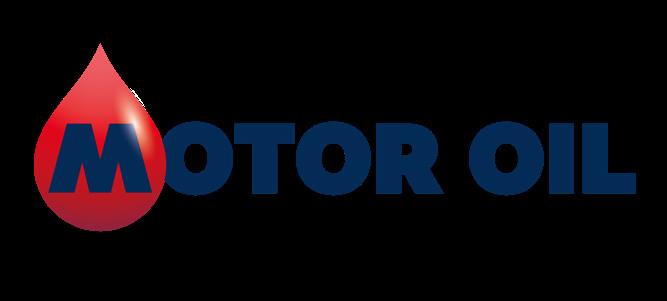
TITLE: GROUP CHIEF INFORMATION OFFICER
INDUSTRY:
LOCATION: UNITED KINGDOM
Nikos Giannakakis holds a degree in Physics, a Master of Science (MSc) in Industrial Systems Management and Administration and is a graduate of the International Institute for Management Development - IMD (Lausanne, Switzerland).

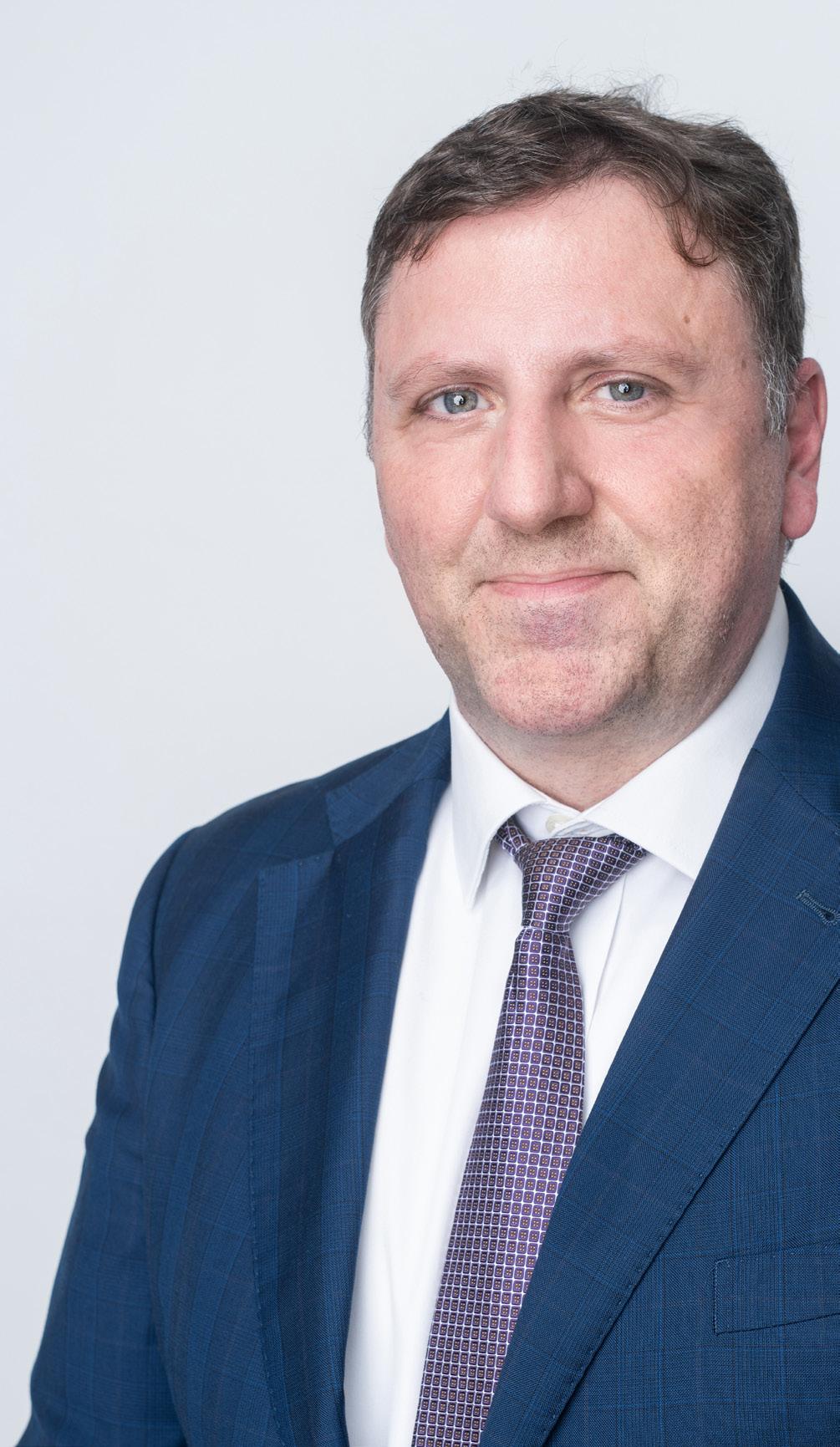
He has 18 years of international experience in the positions of Director and General Manager of Informatics in distinguished Multinational Clubs.
He was also awarded as one of the top 100 Chief Information Officers for 2019.
He is eager on using technology to drive Digital transformation which he believes has brought tremendous cost savings and process improvement to companies across the world.
He has worked as CTO to globally distinguished brands such as British American Tobacco, CocaCola HBC, Richemont Int’l (Cartier, Montblanc, Van Cleef & Arpels, Piaget, SAP etc.

 NIKOS GIANNAKAKIS GROUP CHIEF INFORMATION OFFICER, MOTOR OIL
NIKOS GIANNAKAKIS GROUP CHIEF INFORMATION OFFICER, MOTOR OIL
Greece Small Cap Index, and the FTSE4Good Index Series.
The company operates a refinery, ancillary plants, and fuel distribution facilities that form the largest, privately-owned industrial complex in Greece and are considered among the most modern in Europe.
Motor Oil primarily exports its products, which are made with advanced technology that allows the company to adjust the final product mix to market needs and
achieve higher refining margins than other Mediterranean refineries.

Subsidiaries of the company, Avin Oil and Coral (formerly Shell Hellas) also have a significant presence in the liquid fuel retail sector, with Coral operating in several countries besides Greece.
The company's subsidiary LPC is involved in the industrial production and trade of basic and packaged lubricants and acts as the agent for Valvoline lubricants in Greece. Coral Gas – another subsidiary – is involved in storing, packaging, and marketing bottled and bulk liquified gas, as well as liquified gas for vehicles.
In 2017, Motor Oil established a subsidiary in Cyprus to expand its activities. The company's subsidiary NRG Trading House Energy is involved in the power and natural gas market, offering electricity and
“WE’RE VERY PROUD OF HOW WE INNOVATE AND WHAT WE CAN DIGITISE AT ONE OF EUROPE’S LARGEST INDUSTRIAL OPERATIONS”

natural gas programmes, in addition to comprehensive services for residential and commercial customers.
In the face of global challenges, Motor Oil is making significant investments in the energy transition in Southeastern Europe as part of its efforts to transition to a new energy environment.
These investments reflect the company's commitment to securing energy supply, promoting the energy transition, and generating sustainable returns for shareholders, while also aligning with the company's strategic priorities. The plan is being implemented in the context of geopolitical and economic instability, as well as significant environmental challenges.
• Commitment to acting responsibly
• Enhancement of energy efficiency
• Acceleration of the renewable energy penetration
• Investment in new sustainable technologies
• Provision of energy & mobility solutions to customers
Motor Oil plans to invest more than €2.5bn in growth and energy transition projects, including renewable energy sources (RES), petrochemical products, natural gas, biofuels, hydrogen, and decarbonisation.
Additionally, the company will invest over €1.5bn to improve infrastructure and increase resilience through facility maintenance, logistical improvements,




digitalisation, and projects related to efficiency, health, safety, and the environment.

These investments are part of a plan to create jobs, growth, and value for stakeholders, while simultaneously being environmentally and socially responsible and contributing to the country's gross domestic product (GDP).
Four strategic pillars form the basis of this plan: the first is expanding the company's renewable energy portfolio through its subsidiary, MORE; the second is building an electromobility network through investments in e-mobility, strategic partnerships and installing charging points at gas stations. The
goal is to have over 1,000 charging points by 2023, with a target of 4,000 by 2030.
The third pillar focuses on the circular economy and alternative fuels, including the production of green hydrogen through a joint venture with PPC, the construction of a natural gas-fuelled power plant with GEK TERNA, and investment in solids and waste management.
The fourth pillar involves improving the resiliency and sustainability of Motor Oil's Corinth refinery, including the construction of a Naphtha Treatment Complex and the investment in a new propylene unit, as well as energy upgrades and infrastructure optimisation at the refinery.
NIKOS GIANNAKAKIS GROUP CHIEF INFORMATION OFFICER, MOTOR OIL
“COMMITMENT CASCADES DOWN TO MY DIRECT REPORTS AND ON TO THE ENTIRE ORGANISATION”

Motor Oil works with a range of partners and service providers, all of which it sees as a combined community dedicated to improving and refining the company's business. It is a high priority for Motor Oil.
This community includes VMWare, which Nick describes as one of the company's most innovative partners. Motor Oil has worked closely with VMWare on the company's transition to cloud technologies.
VMWare's work with Motor Oil has become a reference case for other companies, due to its success. This makes Giannakakis proud. "VMWare is one of the partners that contributed significantly towards our expansion strategy execution," enthuses Giannakakis.
Other key partners include a global leader in broad, integrated and automated cybersecurity solutions, Fortinet, which works with Motor Oil on security regarding the company’s retail outlets. “To give you some context, we are one of the biggest retailers in this part of the world, with approximately
1,500 outlets,” says Giannakakis. “We’ve been focused on expanding the services and goods in this area, and this involves scalability and, of course, security aspects, which are a key element of everything we do. And Fortinet is exactly the partner we need to allow us to do that.”
As result of an RFP process during 2022 and a technical evaluation of the best available technologies and vendors globally, MOH decided to strategically be partnered with Fortinet for the implementation of a wide-range SD-Branch project at MOH, taking advantage of Fortinet Secure SD-WAN solution, multi-factor authentication (MFA) & WiFi technologies. There are many benefits for MOH from this project and Fortinet; however, some of the most prominent ones are the increased availability and performance of their branches’ communication paths & interaction with their central datacentres & applications, increased security at their Edge infrastructure, significant reduction at future OpEx and being able to cover the IoT challenges by dynamic detection, segmentation, and protection! Last but not least, all provided edge solutions are future-proof ready and easily expandable and adjustable for zero trust network access (ZTNA) & secure access service edge (SASE).
Motor Oil also lists Microsoft as a key partner, providing a wide range of services including machine learning and cloud infrastructure, in addition to the Greek telecoms company Nova, with which Motor Oil has a strategic alliance.
“I truly believe that telco companies with large ICT programs are key partners that will enable us to achieve our ambitious goals,” says Giannakakis.
NIKOS GIANNAKAKIS GROUP CHIEF INFORMATION OFFICER, MOTOR OIL
“THERE IS ALSO A LOT TO BE PROUD OF THE WORK WE’VE DONE LAUNCHING ONE OF THE LARGEST EV CHARGING SOLUTIONS IN THIS PART OF THE WORLD”
" > _

When everything comes down to data, it makes sense that data will lead the charge in the green transition – but is all data good data?
WRITTEN BY: CAMERON SAUNDERSWe live in an age when most all human behaviour is reducible to data, when everything we do is filtered through some algorithm and turned into datasets that is then filtered through some more algorithms to be understood by the ever-burgeoning field of data science. But, with the climate crisis upon us and in full swing, how can data help us reduce our emissions?
In myriad ways, as it turns out. And, sophisticated though our models might be, we are at the very beginning of

understanding its capabilities and implications.
Take something as simple as a building. Currently, most operate on a rather antiquated on/off system, in which the power is turned on and used as people are inside the structure. This leads to wasted energy. In fact, with the proper approach to building use, up to 10 million tonnes of C20 could be kept out of our atmosphere every year.

With the proper application and execution of data, we could know when people are in (when rooms are booked), when they’re not in, and data will know – automatically and unbeknownst to us – when a building should be at whatever power, whatever energy usage, is optimal. Furthermore, the data provided by data collection systems will provide us with information that will be a powerful influence on our behaviour, for the data will let us know the actions that lead to the highest emissions.

Data, in so few words, provides us with the information which then guides our decisions,
while using technology like AI to reduce our emissions helps us without us knowing about it at all. This approach can, and has, and increasingly will, be applied to businesses at large.
An important starting point is that without the right kind of information – the kind of information that comes from data – no business can begin to make the transition to zero carbon. Emitwise is a Londonbased company that calls itself a carbon management platform, advising companies on their transitions to carbon neutrality.
Co-Founder and Chief Design OfficerEDUARDO GÓMEZ CO-FOUNDER & CHIEF DESIGN OFFICER, EMITWISE
“Without data, there is no visibility, and without visibility, it’s extremely difficult to make good decisions”
“Without data, there is no visibility, and without visibility, it’s extremely difficult to make good decisions”
Eduardo Gómez noted the importance of data in this transition: “Without data, there is no visibility, and without visibility, it’s extremely difficult to make good decisions (or track the impact of these decisions). Analytics that leverage various data sources, including primary data about what companies consume, how they act and the impact of said actions, will greatly accelerate and improve decision making around emission reductions.”
But it’s not just efficient management. Data – as long as it is accessible and accurate
– can tell companies what their competitors are doing, and, in this age of ESG compliance, that can make a world of difference. A client will indeed gravitate towards a company with a solid record on the environment.

“Carbon data can also act as an industrylevel catalyst to reduce emissions by benchmarking activities,” Gómez goes on.
“For example, if you’re a large furniture manufacturer, and suddenly you have all this rich data around the emissions of other furniture manufacturers, the reduction initiatives they’ve previously carried out, and the impact they’ve had, you’d be more inclined to do the same.”

Accuracy in data is, of course, essential. If the information provided to a company is not accurate, how is the company to make the right moves in terms of reducing carbon footprint? In the quest for accuracy, artificial intelligence tools –machine learning, advanced analytics, integration, open-data standards, blockchains and APIs – are fast becoming essential. Among the benefits in terms of accuracy are better precision surrounding a company’s analysis of energy and the identification of inefficiencies. And, most importantly, the more data that
 EDUARDO GÓMEZ CO-FOUNDER & CHIEF DESIGN OFFICER, EMITWISE
EDUARDO GÓMEZ CO-FOUNDER & CHIEF DESIGN OFFICER, EMITWISE
“Carbon data can also act as an industry-level catalyst to reduce emissions by benchmarking activities”
“Carbon data can also act as an industry-level catalyst to reduce emissions by benchmarking activities”
AI can accumulate and sift through, the more accurate it is as a tool.
You could even say that AI turns data analytics into high art.

At the Boston, MA-based digital transformation consultancy Publicis Sapient, they track these changes and advise companies on how best to adapt.
Joseph Tabita, the company’s Senior Vice President on energy and commodities, spoke to us about the possibilities embedded in AI data monitoring. It can, he says, “drive pattern recognition and innovation in a way that traditional data analytics cannot emulate.”
“These can be smaller use cases such as predicting consumer consumption based on smart metre data, spending patterns and other demographics, to complex multivariable optimisation of complex farm to fork, or well to pump supply chains. Companies like Microsoft and Google are already providing elements of this architecture for companies to build on top of.”
But as the pace of carbon data analytics grows and becomes widely available, it can be difficult to keep up and sift through what is accurate data and what is not. With so much riding on data for green transition, measures must be taken to ensure that it is on point.





One such measure – Climate Trace (climatetrace.org) – was launched by former US Vice President and current climate advocate Al Gore at COP27, the United Nations’ meeting on climate change, which was held in November 2022 in Sharm El Sheikh, Egypt. This online database uses satellites and AI models to measure emissions as the source; think, a map of the world with darker clusters over the most populous cities and industrial bases. Some of the discrepancies this new effort has identified are that many self-reported emissions (especially of the oil and gas sector) are completely off – in some cases being three times higher than reported. Such accurate data assessments as Climate Trace will be essential as the world increasingly relies on data to power its energy transition.

TABITA SENIOR VICE PRESIDENT, PUBLICIS SAPIENT
“[AI data monitoring] can drive pattern recognition and innovation in a way that traditional data analytics cannot emulate”
“[AI data monitoring] can drive pattern recognition and innovation in a way that traditional data analytics cannot emulate”
 WRITTEN BY: TOM SWALLOW
PRODUCED BY: TOM LIVERMORE
WRITTEN BY: TOM SWALLOW
PRODUCED BY: TOM LIVERMORE




To navigate as significant a change as e-mobility requires ingenuity, perseverance and collaboration among all parties involved. As with any innovation, partners are crucial for achieving great things, but electrification is a digital revolution and organisations must leverage new and existing expertise to comply with climate change targets and to fully maximise the opportunities arising in the marketplace.
Electric vehicles (EVs) are increasingly at the centre of digital ecosystems, with technology as the primary change factor and differentiator between businesses. “But, with the slew of new EVs in the market and the increased adoption of EVs, especially within the context of CASE in the mobility ecosystem, there is an accelerated pace of change, a reshaping of conventional industry boundaries,” says Laksh Parthasarathy, Global Business Head of the Smart Mobility Group at Tata Consultancy Services.
When Parthasarathy says ‘CASE’, he means ‘Connected, Autonomous, Shared and Electrified’ solutions and how these services are leveraged by EVs to drive sustainability, efficiency and innovation.
Having seen the shift taking place around him, Parthasarathy explains that the switch of drivetrain from internal combustion engines (ICEs) to electric is opening up digital opportunities. As demonstrated in the EVs on the market today, digital technology enables advancement in safety—through artificial intelligence (AI), energy efficiency, and integration with homes to manage electricity and the digitalisation of vehicle maintenance procedures.

AWS utilises transformative digital technologies to accelerate the automotive industry’s development whilst striving for sustainable practices. Customers bring advanced and differentiated products and services to market faster and more cost effectively through AWS.


AWS (Amazon Web Services) is the world’s most broadly adopted cloud platform, offering over 200 fully-featured services from data centres. Ajit Kolhe is the World Wide Partner Lead for Automotive.
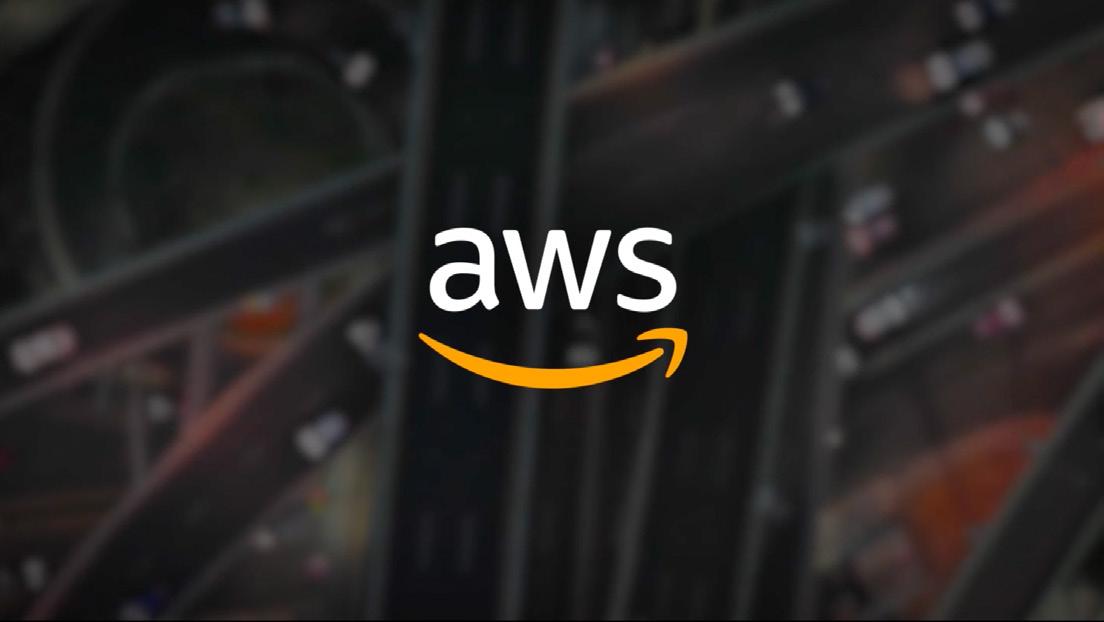
“I’m responsible for working with Partners to build and scale market differentiating solutions to solve customers’ unique business challenges,” Kolhe explains. “Our automotive customers consist of four sub-industries within AWS: original equipment manufacturers; tier one suppliers; AutoTech/startups; and auto dealers. These include customers such as Toyota, Continental, Uber, MOIA, and Cox Automotive.”
AWS’ partnership with TCS dates back to 2009. “It’s been a great journey – TCS is a strategic global system integrator and premier consulting partner in AWS’ partner network.”
Together, AWS and TCS have been focused on migrating critical workloads and transforming IT, with the two having had over 700 customer engagements.

“AWS has evolved the cloud adoption framework, placing emphasis on business outcomes which aligns with TCS’ strategy,” says Kolhe.
Over the last two years, the team has built several solutions applicable in the automotive industry, including TCS Autoscape™ which covers autonomous vehicles, ADAS scenarios, connected vehicle solutions, software defined vehicles and TCS Clever Energy™ for sustainability. AWS contributes to innovation with TCS and has a roadmap of seven TCS solutions that will help to solve customers’ business imperatives.

According to Kolhe, the success of such a partnership can be characterised as an alignment around customer obsession, thinking big and mutual trust.
“We have both earned trust in our relationships and have alignment across both organisations which spans across the customer engagements,” says Kolhe.
Ajit Kolhe is the World Wide Partner Lead for Automotive at AWS. He works with Partners to build and scale market differentiating solutions to solve customers’ unique business challenges. Ajit Kolhe from AWS on sustainability“A classic illustration of how EVs have forced the development of digital-led ecosystems is in the way they are powered. Conventional fuelling did not have an organic need for digital systems. Charging networks and management, on the other hand, have been fundamentally based on digital operating models. Data from EVs and EV battery management systems, and its efficient utilisation, is more critical to the long-term adoption and viability of EVs, compared to their ICE predecessors,” says Parthasarathy.
As the digital ecosystem evolves, technology and automation enable more possibilities for charging solutions in the urban environment that defy the conventional format of designated fuelling areas. While it is critical to supply such services, drivers and businesses also have the flexibility to choose other options, such as charging at a restaurant, at home, at work, or in the car park at a shopping centre.
According to Parthasarathy, the digital ecosystem also enables a smoother transition from internal combustion ehicles (ICVs), which follow a traditional power format.
“For example, one of the biggest concerns is around range anxiety and the need to provide, in real-time, the accurate range left on the vehicle. And with the entry of non-traditional players into the charging ecosystem, we now have access to chargers at restaurants, grocery stores, hotels etc, where one can seamlessly reserve and charge their vehicles, unlike the gas-stationsonly option to fill ICVs,” Parthasarathy says.
“This opens a whole new digital ecosystem to enable customers to find charging stations, reserve them and complete the entire commercial transaction around it.”
Industries that were not previously associated with mobility are crosspollinating and electrification is providing them with commercial opportunities to leverage charging as a competitive advantage, which also supports the shift away from fossil fuels.
When looking at how digital technology serves consumers today, it’s important to understand their current interactions. Before exploring how technology can be leveraged to meet the needs of an evolving industry, leaders first need to be aware of the ‘social customer’, which Parthasarathy explains is a term coined to represent how users respond to a product or service.
These days, technologies are intertwined with social media as an integral part of consumers, whereby they are likely to turn to
“KEEPING THE FOCUS ON THE BIG PICTURE AND ENSURING WE TAKE THE RIGHT STEPS IS AT THE FOREFRONT OF MY MIND—A CHALLENGE THAT I THOROUGHLY ENJOY”
LAKSH PARTHASARATHY GLOBAL BUSINESS HEADSMART MOBILITY GROUP, TATA CONSULTANCY SERVICES
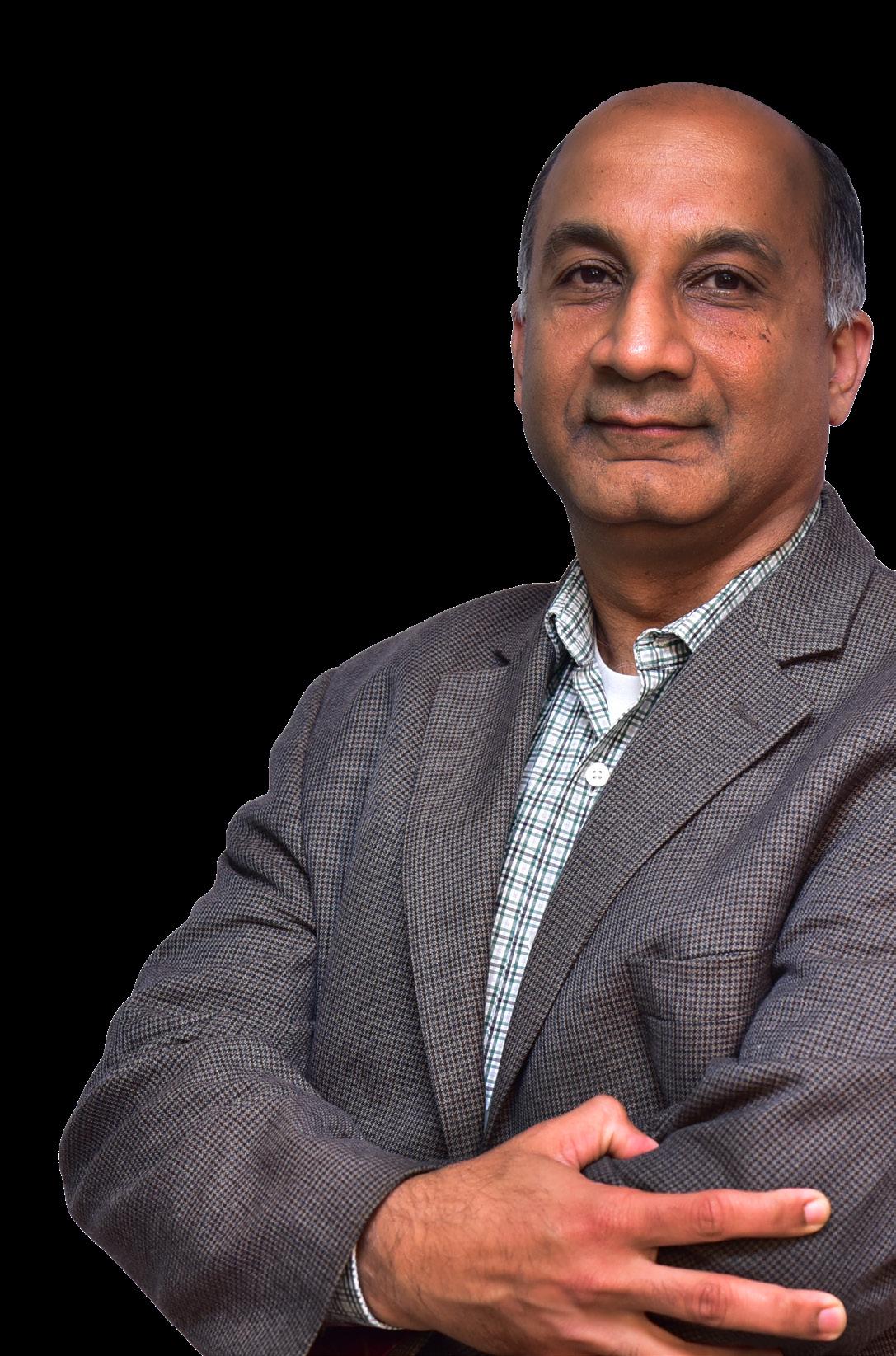
TITLE: GLOBAL BUSINESS HEAD - SMART MOBILITY GROUP


INDUSTRY: CONSULTING
LOCATION: UNITED STATES
Laksh is the Global Business Head for Smart Mobility and EV Ecosystem at TCS focusing on the cross-industry trends impacting the mobility ecosystem. With over 25 years of global experience in the automotive mobility industry, Laksh focuses on driving TCS solutions for the Automotive CASE (Connected, Autonomous, Shared and Electric), Mobility, EV Ecosystem, battery value chain, and multi-modal mobility domains, to address the major challenges faced by the industry. His primary areas of interest are to help accelerate adoption of safe autonomy solutions, EVs in all sizes, sustainable electrification and drive hyper-personalised customer experience journeys towards the renewable energy future.
CASE as a construct in e-mobility or Smart Mobility refers to all of the capabilities that are currently used to bring cars and other transport solutions into the digital ecosystem. Breaking down each one helps to gain a comprehensive view of the overall applications of technology within EVs:
Connected: Also referring to ‘connectivity’, this involves any technology that enables bi-directional communication between devices or systems, including the vehicle itself.
Autonomous: Refers to the technology that allows a vehicle to be operated at various levels of independence from a human driver.
Shared:
As ridesharing services become more prominent, this refers to the technology and ecosystem used to enable EVs and ICVs to be shared and driven as a service, as opposed to a product for a single user.
Electric:
This refers to everything EV-related, including battery technology, the sustainable business model, and cost-efficiency gains.
services like Twitter to air their grievances, as opposed to their service providers directly. Automotive firms are able to leverage this knowledge to tailor their products and services to match the trends among consumers and take a similar approach to businesses by marketing their products and services online.

This puts CASE beyond the automotive industry and demonstrates how the digital ecosystem pulls industries together to integrate their services for a more farreaching and intuitive customer experience.
“CASE automotive, as a construct, is very congruent with the ‘social customer’ archetype. For starters, we see a common narrative whereby the vehicle is an extended living space, offering customers in-vehicle commerce, retail recommendations,
in-vehicle delivery and so on,” says Parthasarathy.
“While some parts of this might look surprising, given that automotive original equipment manufacturers (OEMs) have never been in the business of selling coffee or sandwiches, it fits well with a customer who prefers to have connected services. Similarly, the sustainability narratives that are accelerating the adoption of EVs and safer autonomy are fuelled by a more informed and aware customer, seeking to reduce their carbon footprint.”
The focus has turned towards customer experience and how they interact with their car or any mobility-as-a-service asset. Digital transformation done right means automotive firms implement CASE to tailor or personalise their product and services to

every consumer. A great example of tailoring is through driver profile and key recognition. Particularly in mid- to high-range cars, the car is able to set the driving position configuration and conditions based on the key that is used.
“As organisations realise the importance of seeing every customer as unique, automotive OEMs have begun their foray into areas outside of their core business model,” says Parthasarathy.

“For example, they provide parking, charging, and toll payment services. Almost all the major personal mobility OEMs have also partnered with retail service providers or aggregators to provide connected vehicle commerce offerings, so that they are present across a whole new spectrum of services.”
“They are making sizeable investments into improving the mobility experience through feature upgrades of the vehicle made over-the-air (OTA), and on demand.”
While it is great to celebrate how organisations are meeting the needs of their customers, electrification continues to present more capabilities for businesses and, more importantly, the planet. Therefore, they must always remain one step ahead of the trends, in order to remain relevant in a fastchanging industry.

“I believe the cardinal rule for customer engagement is to prioritise their imperatives,” says Parthasarathy.
“This might imply that OEMs have to pre-empt shifts in mobility consumption patterns, to continue to be the service provider of choice for customers’ mobility needs. OEMs cannot afford to be absent in this ecosystem that not only offers tremendous scope for revenue, but also enables a richer and more hightouch engagement opportunity with existing and prospective customers.”
This reverts back to the point of tailoring to the customer’s needs, which automotive OEMs can achieve by integrating their services in a multi-dimensional network fashion as opposed to a linear model. A great example is usage-based insurance models, which require manufacturers to work with insurance companies—factoring in technology requirements—to provide services like pay-per-mile or base drivers’ premiums on their performance.
Parthasarathy also delves into some of the other solutions that could arise from CASE automotive, including providing connected health services to a customer by working in an ecosystem connecting healthcare providers, retail drug stores, and emergency service providers, synced to customer health data.
“Traditional OEMs are also responding to the needs of the modern automotive customer. In some cases, playing catch up with the customer-experience-focused industry leaders. In other areas, they’re trying to transform their organisations and generate new revenue streams.”
Servitisation is also becoming a response to digitisation and consumer experience capabilities, but it has received negative attention in the past.
“This has created a lot of negative publicity in social media as customers are willing to pay to use a service that is seen as leading edge or innovative (such as Tesla’s selfdriving software) but not for items that were previously bundled with most vehicle trims,” Parthasarathy explains.

He also sees concerted activity and monetisation strategies being built to leverage the value of connected data.

“ORGANISATIONS REALISE THE IMPORTANCE OF MOVING TO AN N=1 CUSTOMER PARADIGM”
LAKSH PARTHASARATHY GLOBAL BUSINESS HEAD - SMART MOBILITY GROUP, TATA CONSULTANCY SERVICES
Connected Ecosystem:

In the connected mobility space, TCS’ product and services strategy is built on the imperatives of seamless personalised mobility experiences for mobility customers and monetisable business models for mobility players. This includes:

• TCS AutoscapeTM Customer Experience Solution: A connected vehicle platform with end-to-end capabilities for an enhanced mobility experience
Autonomy:

In the autonomy space, TCS’ solutions and services address the fundamental data management and software validation needs of its customers. Given the sheer volume of cameras and lidar data that needs to be curated and managed when it comes to autonomy capability, for example, TCS has launched a suite of solutions namely TCS AutoscapeTM Data Services, Data Annotation Studio and Smart Validation solutions to help customers address this complexity and ensure safe autonomy.

1. Data as a lever to optimise costs: This has to do with connected data from vehicles being used to improve existing processes and systems to reduce costs. For example, realtime vehicular data can be used for managing the inventory of spare parts in service centres to ensure that vehicles spend minimum time off road, while also reducing inventory holding costs.


2. Data as an enabler to create revenue propositions: Mobility players are betting big on creating value from services curated on connected data. It is estimated the value of connected services will reach US$20bn in this decade. While this is not yet an entrenched business model, monetisable subscription models built on these connected services are quickly becoming a reality, whether it be through OTA upgrades, usage-based insurance, fleet management systems, or in-vehicle commerce. The ongoing success of this model will rest on the mobility players’ capabilities to build perceptible value through personalised and contextual services, so that customers are willing to pay for it.
3. Data as a tradeable commodity: Data marketplaces are not a new concept. OEMs have been partnering with tech players for data sharing, much like conventional data marketplaces in other industries like finance and retail, in revenue sharing models. However, the challenge with this model is the ever-intensifying regulatory environment around the handling of customer data and the need to preserve the trust of customers when using their information. While there are consent management systems in place to ensure that the rights of their customers are protected, it is uncertain whether OEMs would rely on this model to generate substantial revenues.
He sees a fourth perspective that will emerge to become a data monetisation proposition with substantially greater impact. It has to do with data being used as an enabler for partner enabled business models.
Any model built on data is only as good as the variables it captures. One reason why some players have not been able to monetise the data they capture from vehicles is because it covers only parts of the customer journey. This is where the ecosystems come into play.
If a company offers connected vehicle commerce to a customer as a service offering, it needs to be part of their entire retail journey, something auto OEMs are conventionally not part of. We now see business models that use data from different customer journeys in a partner driven ecosystem to generate monetisation opportunities.

Moving forward in the electrification process, companies can benefit from TCS’ solutions for myriad reasons, including data

“OEMS MAY HAVE TO PRE-EMPT SHIFTS IN MOBILITY CONSUMPTION PATTERNS TO CONTINUE TO BE THE SERVICE PROVIDER OF CHOICE FOR THE CUSTOMERS”
LAKSH PARTHASARATHY GLOBAL BUSINESS HEAD - SMART MOBILITY GROUP, TATA CONSULTANCY SERVICES
monetisation, creating revenue propositions from data sources, using data insights—such as recommendation services—to reduce costs, and optimising the overall e-mobility experience from a sustainability perspective.
TCS offers e-mobility and EV battery sustainability solutions, which enable organisations to gain visibility over their entire EV value chains to assess their performance and sustainability goals down the line. From a battery perspective, this comes in the form of a digital battery passport, which gives traceability across the battery value chain, chain of custody and ensures net-zero heritage as well as solutions to manage battery second life or end of life processes.
Digital solutions will enable businesses to move forward and deliver more intuitive responses to business changes, which is assisted by Amazon Web Services (AWS), as the firm’s strategic cloud provision partner.
Having been a partner for well over a decade, TCS is the strategic global systems integrator (GSI) and premier consulting partner of AWS, with more than 700 customer engagements between the two firms. The company also achieved accreditations across 18 AWS Competencies. TCS has more than 12,500 AWS certified professionals and 30,000 employees on AWS. The company has several partnership credentials and awards from AWS that recognise TCS as a top global system integrator for AWS technologies—putting TCS among the top 10 biggest global system integrators for AWS.
Our joint focus on tailormade industryspecific business solutions like TCS AutoscapeTM built on AWS, and powered by the latest technologies such as AI/ML, IoT and blockchain, are helping industries across the globe. In addition, we are jointly
EV adoption requires a robust charging infrastructure. TCS solutions integrate charging with bi-directional charging capabilities into the power management ecosystem to offset demand charges, respond to demand events, optimise charging from a holistic energy orchestration, and perform energy arbitrage. This holistic approach allows fleet owners to mitigate risks associated with reliance on the local electric utility for energy.
investing in our product portfolio in areas like quantum computing, the metaverse, blockchain, 5G, cloud sustainability, AI/ ML, IoT/Edge, data and analytics, and data sovereignty.
“We are working very closely with AWS. It’s not just about using AWS as a cloud provider for our solutions. The solutions and capabilities that I spoke about earlier have been built in close partnership with AWS, encompassing the best of cloud capabilities for our customers,” says Parthasarathy.
The specialised teams within the TCS’ AWS Business Unit helps customers accelerate and automate the different stages of their cloud journey using TCS’ extensive library of frameworks, accelerators and toolsets such as TCS Cloudonomy™, which enables clients to discover the most workable and custommade solutions applicable for their business while predicting future needs. TCS uses its proven transformation tools, such as TCS Modernisation Propeller™ with its extensive library of predefined industry-specific microservices and API, to enable customers



“FROM A TECHNOLOGY PARTNER STANDPOINT, WE ARE PARTICULARLY WORKING VERY CLOSELY WITH AWS. IT’S NOT JUST ABOUT USING AWS AS A CLOUD PROVIDER FOR OUR SOLUTIONS BUT A STRATEGIC PARTNER JOINTLY SOLVING FUNDAMENTAL INDUSTRY PROBLEMS”

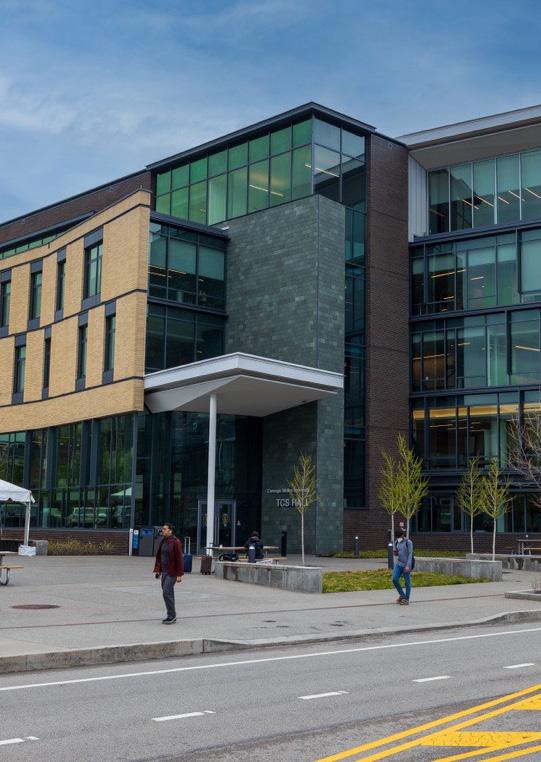
LAKSH PARTHASARATHY GLOBAL BUSINESS HEAD - SMART MOBILITY GROUP, TATA CONSULTANCY SERVICES
to benefit from ecosystem wide impact. TCS has built Cloud Value Measurement Model (CVMM), based on TCS and AWS best practice frameworks, to measure customers’ cloud transformation journeys.


Over the next year and beyond, TCS will continue to analyse the e-mobility trends and provide the necessary digital transformation expertise to allow companies to leverage the automotive evolution to EVs.
TCS will also continue its collaboration in partnership with the Formula E team, Jaguar TCS Racing. Using digital technology, software, and leveraging the power of the cloud, TCS helps the team collect podiums and win races. Furthermore, TCS and Jaguar use Formula E as a real-world test bed for the automotive electrification journey. Learnings from the racetrack can be leveraged to transform the entire electric vehicle ecosystem.
From a sustainability perspective— besides the inevitable shift to EVs and other electrified transport—CASE can be applied to sustainability outcomes as it supports the reduction of lifetime Greenhouse Gas (GHG) footprint by about 37% for passenger vehicles.
Enabling vehicles to connect more means authorities, such as traffic operators, can optimise mobility. This is another selling point for consumers but still requires more innovation to provide personalised customer experience. Vehicle-toeverything technology also provides social benefits from a sustainability point of view, but predictive maintenance and OTA updates must also be adopted to ensure that solutions work in harmony together.

Procurement is one of the essential, if unsung, engines of the economy. How can we ensure that it’s sustainable?

sustainability.



For many, a sustainable procurement process comes down to smart economics. Proxima is a consultancy that helps companies – FTSE 100 ones among them – sustainably transition their procurement and logistics operations. The company’s Executive Vice President for Procurement, Simon Geale, views approaches to procurement as well as sustainability through the lens of spending wisely, and in this regard, the interests of both most certainly overlap.

align with like-minded suppliers, as well as to rate the sustainability and social values of potential suppliers.
“In their contract, there’s a clause that requires them to provide sustainability data and ensure that their values align with expected on-site behaviours across power





Still, it doesn’t come down solely to checking your partners. A deep understanding of markets is also informative and essential. Only then will sustainable procurement become shockproof. Going back to Simon Gaele at Proxima, he says: “Understanding the supply market means you will get the best outcomes available to you. If you don’t understand the market, you will always buy what you know, or, at best, be constrained by your own ideas and open to supply market risk. That’s a dangerous place to be in.”

Gaele does concede that the market –the lifeblood of enterprise and capitalism – does have a seminal part in the quest for sustainable procurement: “As unfashionable as it is to say sometimes, markets inform what we should be paying for sustainable solutions; even in a deep collaboration where we are ‘designing to X,’ market intelligence informs commercial value calculations, top and bottom line.”

“NO ONE CAN BECOME NET ZERO UNTIL WE ALL BECOME NET ZERO”
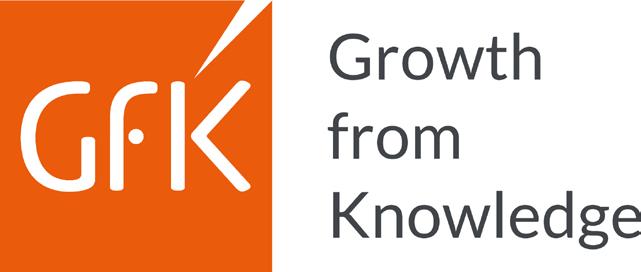


how she did it…
Suki Becker is Vice President for Procurement and Real Estate at the independent, trusted and unparalleled tech- and data-company, GfK.
For over 25 years, she has been working in the procurement and supply chain world and in her last few roles, has been responsible for the transformation of indirect procurement. Becker has a degree in Procurement & Supply Chain Management and has been a member of CIPS since graduating – in other words, she has procurement in her bones.
Becker started out as a Production Planner working in Automotive, where she learnt lean processes and management before becoming a Lean Consultant, and then moved to Procurement over 18 years ago.
Coming from a manufacturing background and never having worked in a service industry before, Becker “was really interested to understand how this industry works compared to manufacturing”, wanting to “understand some of the challenges of the service industry”.
Now VP for GfK, she understands the challenges more than most.
A sophisticated tech- and data-company, present in over 60 countries, GfK helps their clients solve critical business questions in decision-making processes around consumers, markets, brands and media. They also provide reliable data and insights through advanced AI capabilities at their foundation. But it doesn't stop there.

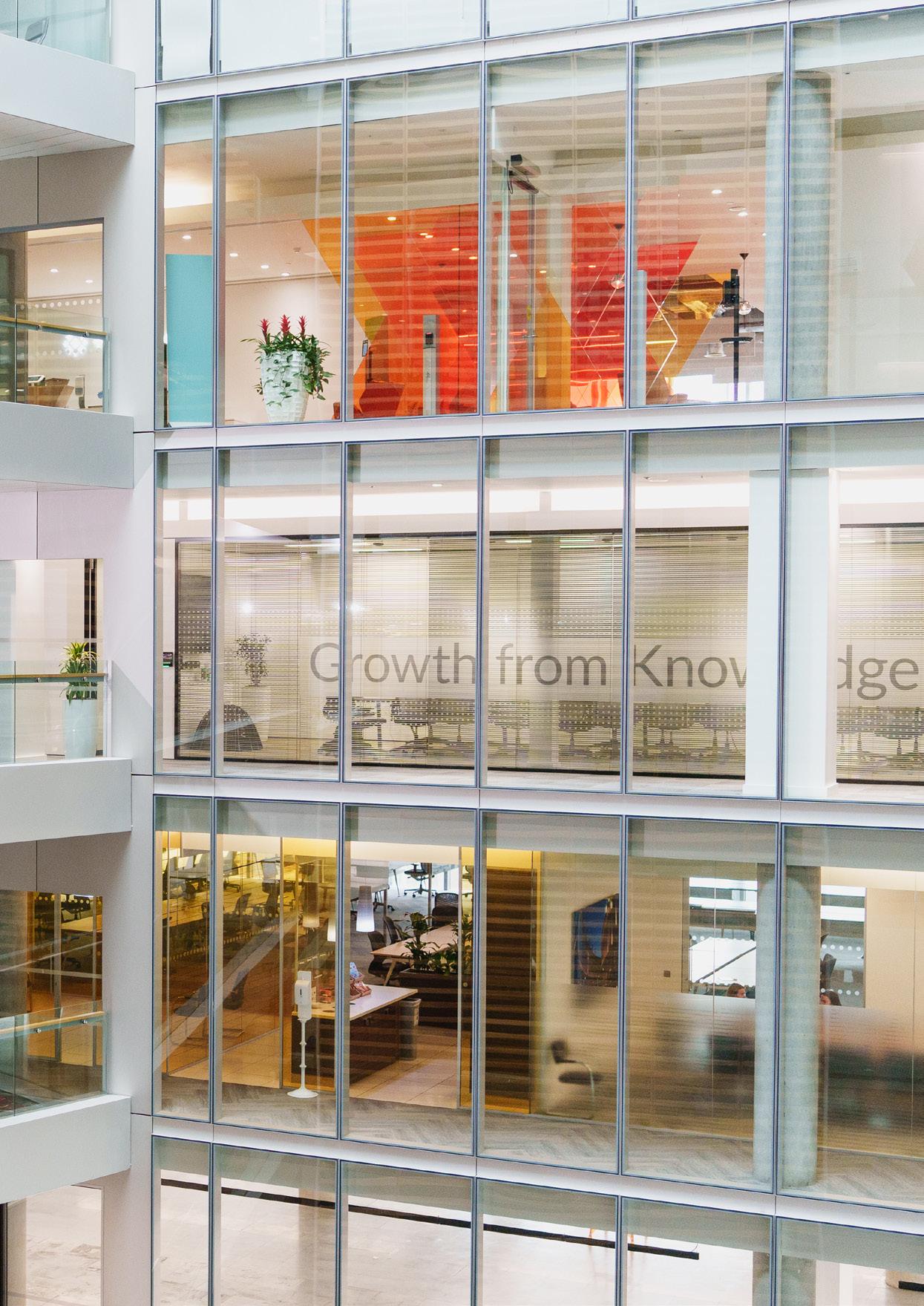
GfK have revolutionised access to real-time actionable recommendations that drive marketing, sales and the organisational effectiveness of their clients and partners.

‘A marketing company is a marketing company’, they say. But GfK stands apart from its competitors due to four crucial factors:
• Trust: GfK have one of the highest competences with data management and quality
• Signals from the noise: They provide actionable and measurable recommendations through analytics and technology

• Knowledge and expertise: GfK have a deep understanding of the market – as well as of psychology and consumer behaviour – having been around since the 1930s
• Always-on intelligence: GfK also offer digital solutions that put data science at the fingertips of clients, giving them a substantial advantage over competitors
“I wasn’t concerned about having one supplier for everything - but with having the right tools at the right cost for GfK”
SUKI BECKER VP PROCUREMENT & REAL ESTATE, GfK
How GfK reorganised its procurement and real-estate functions
Becker joined GfK in November 2020, when their procurement and real estate had already been combined under a single function.
“However, I realised that there were category teams, as well as some regional teams and 25 direct reports,” she says.
“Some roles, job descriptions and titles were not defined accurately enough. So, I spent time revising all the job descriptions and titles so that we had the same across categories and countries, then worked with HR to standardise the grading and work on a career path that helped individuals understand what they need to achieve to develop themselves. In order to further support their career journey, I invested in a digital learning program which is accessible to every employee in Procurement. This not only gives my team full access to professional training on core Procurement skills like negotiations, contracting and stakeholder management but includes focussed modules and certifications on Sustainable Procurement which is equally important for us”.
Becker created a category structure for GfK’s procurement functions and changed the roles of the regional heads, making them not only responsible for procurement, but also real-estate and facilities.
Two years ago, GfK had several different contract databases for leases and also the way of storing contracts was different. The company then streamlined these by moving to a modern building lease contract database.
At the same time, GfK executed a tender for the procurement contract database to enable a single, integrated system for storing
TITLE: VICE PRESIDENT
PROCUREMENT & REAL ESTATE
LOCATION: SWITZERLAND
Suki has led Procurement and Real Estate at GfK since November 2020. She lives and works in Switzerland and has worked in Global roles for the past 12 years. She started her career working in Logistics as a Production Planner in the Automotive Industry and continued to move industries, transitioning to Procurement over 17 years ago. Suki has worked in UK’s Ministry of Defence, UK Nuclear Energy, Pharmaceuticals, Industrial Engineering and Market Research, working within
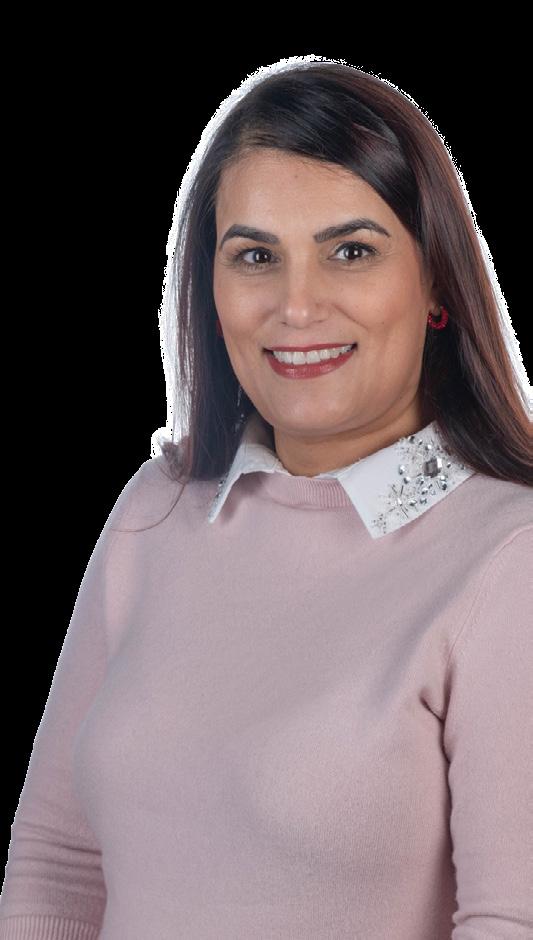
Staying ahead in a fast-changing world can be challenging for businesses.

Read how Cognizant supports GfK in becoming a future-ready, modern business by building a scalable global delivery model with realistic delivery capacity and business SLAs/KPI driven operations. Learn more
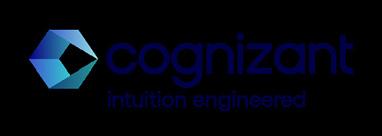
Cognizant’s Anuj Seth – Chief Delivery Officer, Central Europe – discusses the company’s partnership with GfK, transforming for the modern age & sustainability
Most businesses are setting internal net-zero emission stakeholders and futureCognizant, it is time to take responsibility.
The company, which works alongside businesses to provide advisory and practical IT aid, is not only partnered with some key global businesses to offer assistance in digital transformation and other IT services to achieve net zero, but is also looking to mitigate its own operations and achieve the standard by 2030.

Net-zero initiatives at Cognizant include investing in renewable energy and increasing energy efficiency. Cognizant is ready to meet this target, with Anuj Seth certain they’re on course. Seth has over 20 years of experience in Europe’s
IT outsourcing industry, joining Cognizant in 2014. He’s currently Chief Delivery Officer (CDO) for the Central European region – the second biggest outside the US.
“I have held multiple leadership roles. In my current role, I am responsible for client delivery in Central Europe,” says Seth. “Cognizant engineers modern businesses and helps clients modernise their technology. We help our clients do what others can’t: operate with human insight, but at superhuman speed. So they get ahead, and stay ahead.”
Many businesses Cognizant works with are navigating their own net-zero ambitions, so the company is developing sustainable solutions for those global clients seeking to minimise their own carbon footprints – which is where Seth is keen to lead the change.
Partnership with GfK Cognizant has had a partnership with GfK since 2018. The two are working together in the development and support of core business applications like SAP and Salesforce, as well as applications supporting other business processes.

“We provide a global and scalable delivery model that isn’t just cost efficient, but that also helps GfK reduce time to market,” says Seth.
“We are part of their core IT team, supporting various transformation and modernisation programmes,” said Seth. “We are supporting GfK with specialised knowledge on application rationalisation and assessment; cloud transformation; leveraging domain knowledge in Information Media; and working to drive the realisation of the goals (of Gateway initiative).” Learn
contracts, which are now readily available to the team; an e-sourcing tool to move away from email exchanges with suppliers; and a supplier-management tool, where they could send questionnaires to the suppliers and collect data relevant to their onboarding onto their system.
“The utmost goal was having the right tools at the right cost for GfK.”
Becker says that, presently, there are a number of procurement people that concentrate on systems integration, thinking that procurement can be sped up if they just have the right system in place.
“I think that before jumping to a system solution a company needs to have the right processes in place first.
“One of the transformations that I brought about at GfK was to look at our procurement processes and deliverables, regardless of the system that was being used.

“Standardising and stabilising processes is far more important than the actual systems that are used. I would recommend doing this first and then introducing tools to support.”
Like many other companies, GfK differentiates between their suppliers by segmenting them into the categories of ‘strategic’, ‘preferred’ and ‘everyone else’.
“We have some strategic partners that we could not operate without; partners that we have regular business reviews with to ensure that we are working in tandem, as well as joint continuous improvement plans, with actions for both sides.
“A lot of times, what a customer does has an impact on supplier costs, and rather than just squeezing the supplier it’s a better and more effective strategy to work together towards reducing the inefficiencies and overall costs for the business.”
Becker explains that the advantage of segmenting the supply base is that it ensures GfK doesn't need to tender each and every time they buy goods or services.
But one thing is for certain, and that’s that, once again, supplier relationships are key.
“We have partners such as Cognizant that we have been working with for 4 years”, says Becker. “Cognizant are a strategic partner for IT; they support our Enterprise Applications Teams and take care of SAP, Salesforce and many other projects.”
Explaining this further, Becker states that GfK chose Cognizant because they have the right technical skills, knowledge and credentials in the Information Management space – and because Cognizant are committed to sustainability.
“We had a very consultative process with them during the tender phase, where they’d proven themselves cost-effective by leveraging a global delivery model. They’re also flexible and not always pointing to the contract – plus, they also know how to take ownership, and supported us well throughout the pandemic,

“One of the transformations that I brought about at GfK was to look at their procurement processes and deliverables, regardless of the system that was being used”
SUKI BECKER VP PROCUREMENT & REAL ESTATE, GfK
providing us with the right skills for the right projects. Although the world stopped, our projects didn’t”.
GfK have also made a lot of progress in terms of their Environmental, Social and Corporate Governance commitments. Though they have been submitting Ecovadis and CDP reports for some years, GfK had not submitted any quantitative data. This, of course, relates to authentic sustainability, which is about measurable and therefore actionable policies. Again, Data is key.
This is where Becker came in: “The first thing we did was to measure our carbon emissions. We nominated staff at each of our sites as sustainability partners to support data-gathering. We were collating the data into a single tool and interpreting it.
“We collected carbon-related data for 2019 and 2020. Once we understood this, we put a programme in place to first reduce our building footprint by accelerating hybrid working and consolidating sites in the same country, and then we implemented local initiatives like recycling and reducing plastic.”
“I also ensured that all my procurement staff were trained on ethical procurement so they could better understand the social, environmental and ethical impact within the total supply chain.”
GfK have now made a commitment to be climate neutral by the end of 2025, and, according to Becker, since they’ve reduced as much as they presently can, they now need to offset.
“2022 was the first year that we offset 25% of our 2021 emissions,” she says. “We invested in a technology project in India that also gives back to the people in the region by helping women work and providing children with education.
“I firmly believe if more companies took the initiative like we did, we could really make the planet a better place for us all.”
When asked about what she sees for her company and her role in the future, Becker stated “I see best-in-class cost, productivity, quality – so we have things done right the first time around and a faster response time to our clients.”
“We’re not looking for cheap because ‘cheap’ drives low quality, and the reason GfK is successful is because we provide a high-quality product, at the right cost and at the right time.
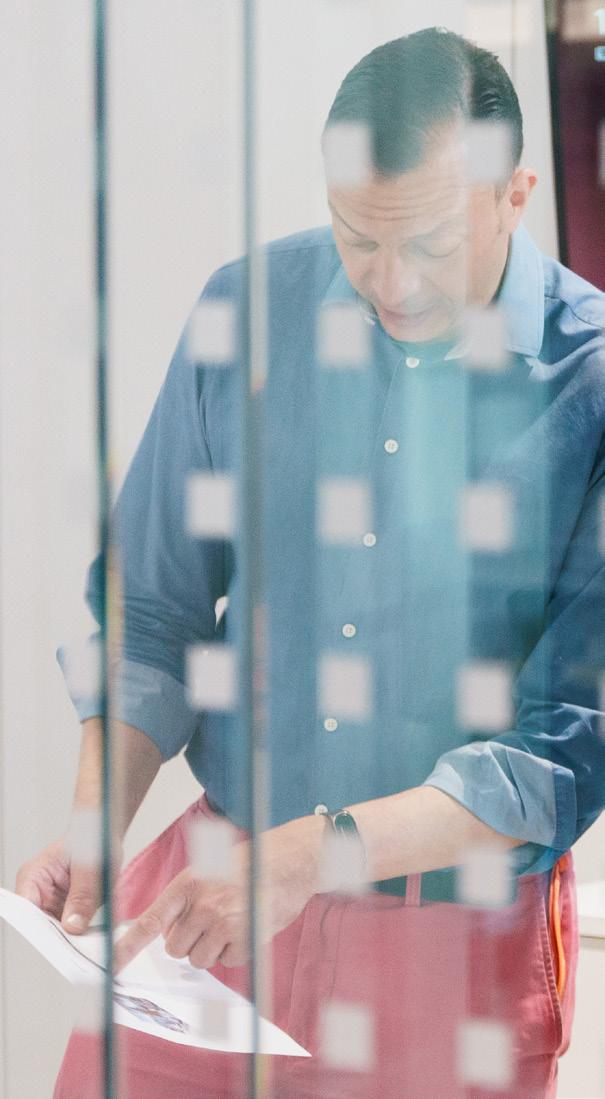
“Aside from that, we want partners that are committed to sustainability and understand that we need to work on this together.
“I think there is still a gap in the service industry. And, although GfK has come a long way on this in the past few years, some of our suppliers are still lagging behind.
“So, we’re investing time with our suppliers now to help them through this journey – as we’ve just been through it, we understand the requirements.”

“Standardising and stabilising processes is far more important than the actual systems that are used. I would recommend doing this first, and then introducing tools to support.”
SUKI BECKER VP PROCUREMENT & REAL ESTATE, GfK




As the world doubles downs on the fight against fast fashion, we take a look at the sustainability officers leading the industryWRITTEN BY: CAMERON SAUNDERS
ith every passing year, fast fashion becomes more popular – despite constant discussion about the damage it wreaks on the environment and human rights. And, with every passing year, the inordinate waste becomes an even bigger scourge on the fashion industry’s environmental record.



With a better future in mind, Sustainability Magazine is taking a look at some of the leaders that can serve as a model for what companies can do.
Some have introduced circular policies; some have improved hiring practices, and others have pushed reusing and/or recycling. All, though, come brimming with ideas for how to create a more sustainable future.
Parfums Christian Dior
Isabelle Sultan, CSO at Parfums

Christian Dior, had extensive experience with Danone prior to joining Dior, the French fashion house. Her experience with her old company informs what she does at the new one, and she believes that sustainability is not new, but serves to facilitate growth and change across the perfume industry.


Prior to working as CSO at Hermès International, Pierre Alexandre was a partner at Ernst & Young, where he oversaw strategy development across the group and facilitated improvements to production.

At Hermès, the job is slightly different: the French fashion house is one of the leading purveyors of luxury goods in the world. Leather and silk are the name of the game at this company. Its quest for sustainable development goes back to its artisanal origins (it was founded in 1837). This quest for legitimacy of material has extended to sustainability in employment, as well as in local anchoring.
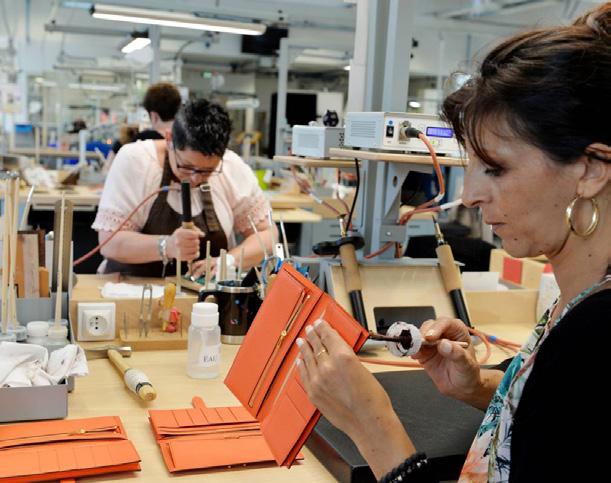
Halide Alagöz cut her teeth at the fastfashion juggernaut that is H&M. She ran its supply chain operations before transitioning to seeing that the company be run more sustainably.

After 18 years at H&M, she moved to Ralph Lauren in 2016 to become the Chief Product and Sustainability Officer overseeing the Polo, RRL and Lauren brands. Here she oversees the end-to-end life cycles of the products, from sourcing and development to the moment they hit the shop floor, specialising in what the company considers a holistic approach to sustainability.




After beginning a career at such companies as C&A and McDonald’s Corporation, Jeffery Hogue has moved on to the mavens of blue jeans, Levi Strauss & Co.
Among the changes he has implemented during his time at the American company are raising the standards of sustainability in the eyes of the consumers of Levi’s. This includes giving the necessary support to business teams to deliver a more sustainable product. Additionally, he hopes to create thousands of sustainability ambassadors who can engage with customers in building the company’s bona fides in this area.


Development
Sustainability principles of Re-Use, Retrofit, Recycle, and Upgrade reduce CapEx and OpEx with up to 88% less embodied carbon cost compared to standard new builds.

Learn
TM
When thinking of fashion outlets, internet marketplace extraordinaire eBay might not immediately spring to mind. But think: eBay has 135 million users globally and 16% of all of its products sold fall under the ‘Clothing and Accessories’ category, making the website one of the biggest fashion outlets in the world.


Heading up its sustainability department is Renee Morin, a woman who has built her career advising and consulting leading companies. Her ethos as a Chief Sustainability Officer has been ensuring that companies take a proactive approach to green transformation rather than just waiting for regulations to force adaptation. To see this through, she helps the companies she is helping manage to create metrics that will ensure smoother and more sustainable operations from multiple angles.
that has led the charge of sustainability down under, with its sustainability manager, Kate O’Grady, seeing that it keeps its reputation intact.


Among its most recent achievements are powering one of their factories in India with solar energy panels so that it’s completely sustainable. What’s more, all employees working here are paid a living wage, while all packing bags and mailers are made from 100% recyclable and biodegradable material.





Primark
Under the leadership of Head of Environmental Sustainability, Nick Farrar, has transformed Primark from the fast-fashion bête noire of the British high street into one of its shining lodestars.

In a recent Sustainability and Ethics Progress Report, Primark was able to boast that work with its sustainable cotton programme means that 40% of the cotton it currently uses is recyclable. It also works with its suppliers in India, Bangladesh and Pakistan to ensure that they are using sustainable, regenerative farming. Finally, in an answer to critics who say it is a one- or few-use brand, Primark has implemented Textile Takeback boxes in its stores, encouraging customers to recycle.

adidas has been scoring well according to sustainability standards. In November 2021, according to the rating agency S&P, when assessed on its ESG performance, the German company had a rating of 79 out of 100 – among the highest across companies globally.
is the work of Katja Schreiber, who has been with adidas for almost two decades. In assessing her performance, leadership and governance efforts have been especially lauded.

CSR and Sustainability Communications Officer
MUD Jeans


MUD Jeans, based in the Netherlands, is the world’s first circular denim company. Lea Landsberg, the company’s CSR and Sustainability Communications Officer, works to ensure that it maintains its status as one of the most forward-thinking clothing manufacturers in the world.


MUD Jeans has had B-Corp status for nearly a decade and, according to a recent sustainability report, uses 94% less water and 75% less CO2 than its nearest competitors. In addition to covering these kinds of environmental metrics, the company promotes the use of fair factories as well as positive activism.





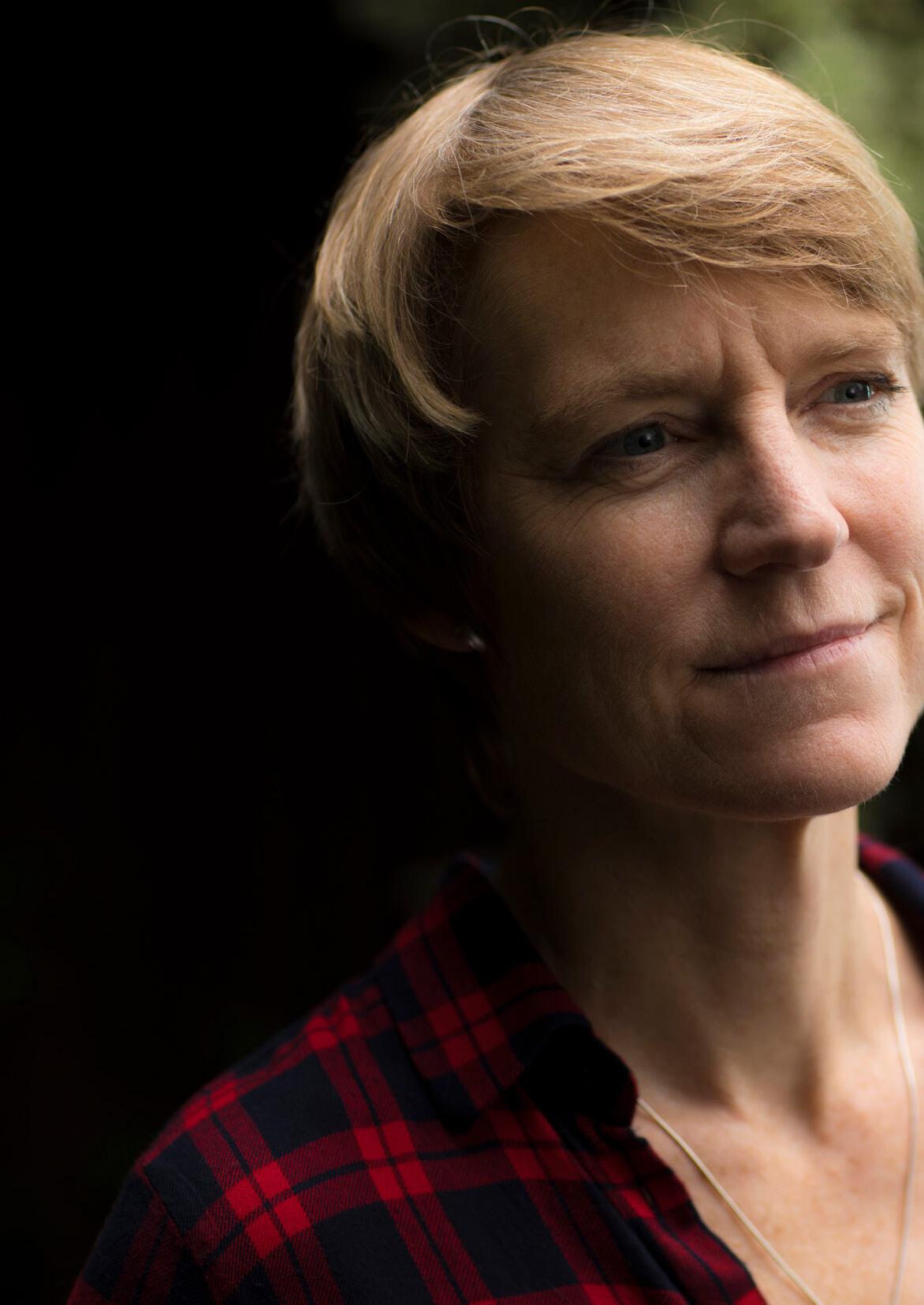
Director of Environmental Action EMEA, came to the role down a tortuous path. She worked for some years at Exxon, of all places, and then received an MBA from Harvard, fundraised for the Royal Society for the Protection of Birds and then at ClientEarth. In joining Patagonia –which has the top reputation for environmentalism of just about any fashion brand in the world – she stated her goal succinctly: “What I want to do is change the world, and this is probably the most influential position I can be in.”



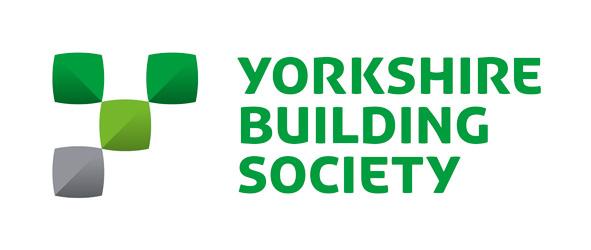
 WRITTEN BY: ALEX CLERE
PRODUCED BY: MICHAEL BANYARD
WRITTEN BY: ALEX CLERE
PRODUCED BY: MICHAEL BANYARD

In recent years, Yorkshire Building Society has undertaken a transformational journey –one that starts and ends with the customer
When Yorkshire Building Society’s (YBS) Chief Commercial Officer, David Morris, and Director of Business


Transformation, Ben Sampson, join me to discuss the seismic change that the mutual has enjoyed over the last five years, there’s more than 100 miles between them. Morris is joining from Oxfordshire in the south of England, while Sampson is dialling in from Halifax in the north. It’s a sign of the times – in business today, it’s not unusual for colleagues to be separated by postal codes, time zones or even oceans. But it’s also a mark of how far Yorkshire Building Society has come since it was founded in 1864.
YBS can trace its roots back more than 150 years to the Huddersfield Equitable Permanent Benefit Building Society, whose members would meet each morning from 5-8am – not on Zoom, but in a single room in the Yorkshire town. Early directors of the society included a dentist, a shoemaker and a plumber. At the end of the first year, there were just six borrowers and assets of around £4,000 – over £400,000 in today’s money.
The name itself stems from the West Yorkshire Building Society, which was founded two years later in Dewsbury –a short six-mile hop from the town of Huddersfield. For over 100 years, the two building societies operated in separate orbits – orbits that would rarely stray outside this small, 10-mile patch of northern England. In 1982, the West Yorkshire Building Society


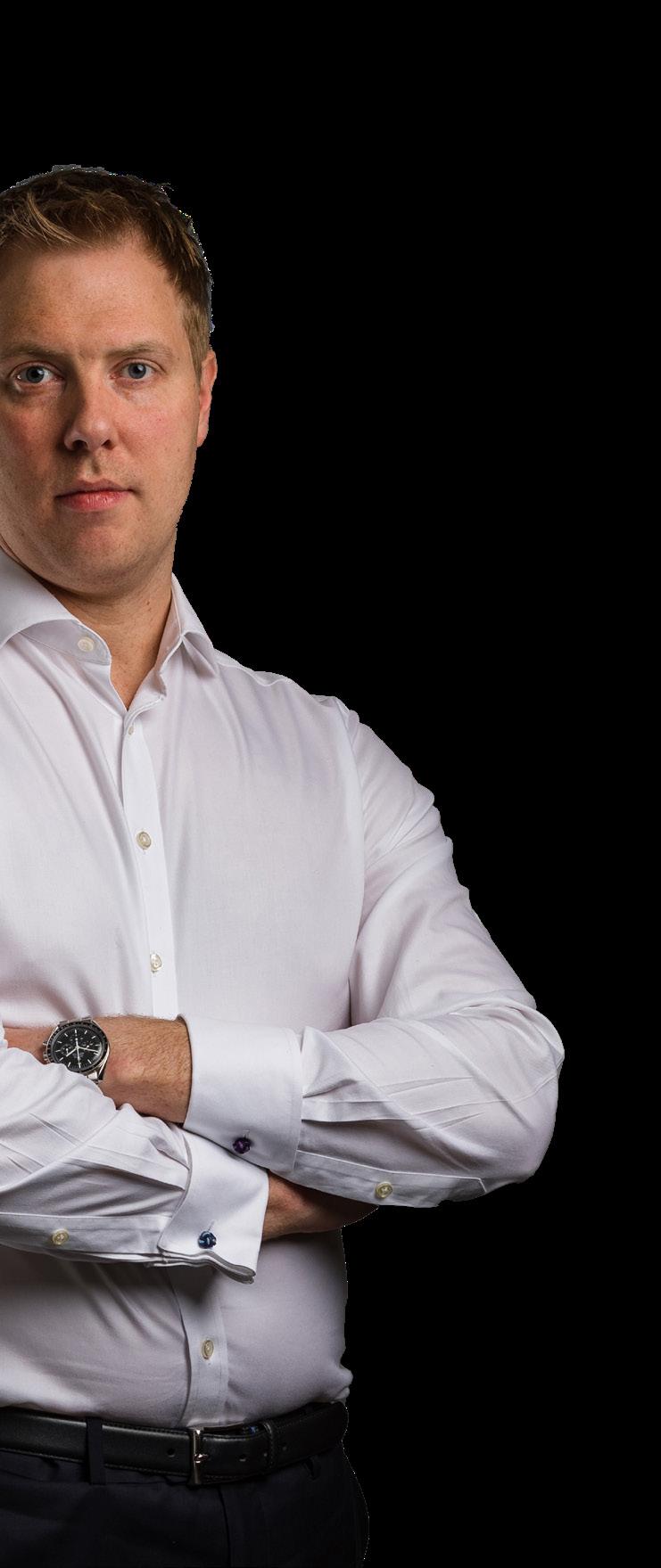
and the Huddersfield Building Society merged with another local mutual, the Bradford Building Society, to create the entity that exists today.
It is a history of consolidation: in the years after the merger, the newly rebranded Yorkshire Building Society would gradually accumulate more of its peers from across the UK, slowly increasing its sphere of influence and growing steadily in size. The Haywards Heath, Barnsley, Chelsea, and Norwich & Peterborough Building Societies were all subsumed into YBS and today the group has a balance book in excess of £55bn.
Being local and mutually owned means that Yorkshire Building Society is motivated by its members, not by a distant shareholder who they’ve never met. Everything that YBS does is for the service of its members.
“I don't actually think we are local at all anymore,” Morris says. “We've got a national branch network, a sophisticated digital footprint across all our brands and we've obviously got customers from all over the British Isles. We've got customers in Northern Ireland, Scotland, Cornwall, and a huge London presence.”
Instead of thinking local, YBS today thinks about local values. It has expanded far beyond Yorkshire’s borders, but the organisation is still proud of its heritage and
is committed to upholding the traditional values that are said to define this beautiful part of the world: humanity, empathy, honesty, and a sense of doing the right thing.
“I’m a proud Yorkshireman. I'm a local lad,” says Ben Sampson. “I love coming to work at the Yorkshire Building Society because whilst we're national and we make a national impact, I think the culture and the roots of the business feel very Yorkshire. If you ask a Yorkshireman what they think about being from Yorkshire, they'll use words like openness, integrity, fairness and honesty – and I think we have a culture that really thrives on that.”
• Historical area of northern England made up today of four counties
• Nearly 15,000km² ranging from peaks and dales to heritage coastline
• Major cities include Leeds, Bradford, Sheffield, Hull and York
• Renowned for its food and drink including strong tea, batter puddings, Wensleydale cheese, Pontefract liquorice, and its forced rhubarb
• Population according to the 2021 UK census: 5.5mn
“ I’M A PROUD YORKSHIREMAN . I LOVE COMING TO WORK BECAUSE, WHILST WE MAKE A NATIONAL IMPACT, THE CULTURE AND THE ROOTS OF THE BUSINESS FEEL VERY YORKSHIRE”
BEN SAMPSON, MBA DIRECTOR OF BUSINESS TRANSFORMATION, YBS


TITLE: DIRECTOR OF BUSINESS TRANSFORMATION
INDUSTRY: FINANCIAL SERVICES
LOCATION: UNITED KINGDOM
Ben began his career at HBOS and worked in various business areas until 2008 when Lloyds TSB took over during the financial crisis. At the newly formed Lloyds Banking Group Ben undertook significant roles in both the Integration and Verde (TSB creation) programmes. Since Joining YBS Ben has led a number of high profile programmes of work that have helped transform and modernise the society, such as the lending re-platforming work to move YBS to the IRESS MSO platform. In his current role as Director of Business Transformation, Ben is responsible for the strategic design, business case and planning of the YBS transformation. This includes overall sponsorship and ownership of the benefits and benefits for the programme and accountability to the Executive and board.


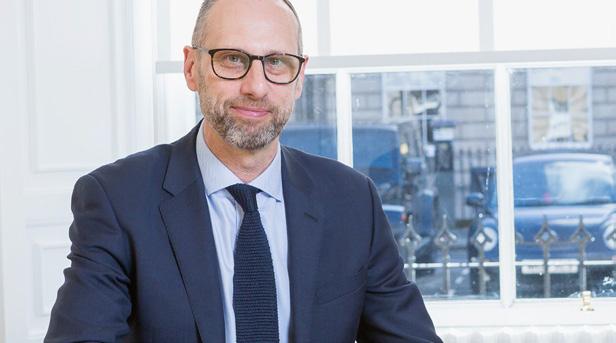
UNITED KINGDOM
David began his career at Citigroup and has subsequently worked at various Financial Services institutions across the UK and abroad. He is responsible for the innovation, development and ongoing management of the Society’s mortgages and savings products, YBS’s marketing and its digital channels, mortgage distribution and the Society’s branch network. David is also responsible for our Commercial Lending and is Chair of Accord Mortgages Ltd. Prior to joining YBS David was the Head of Products at Coventry Building Society.

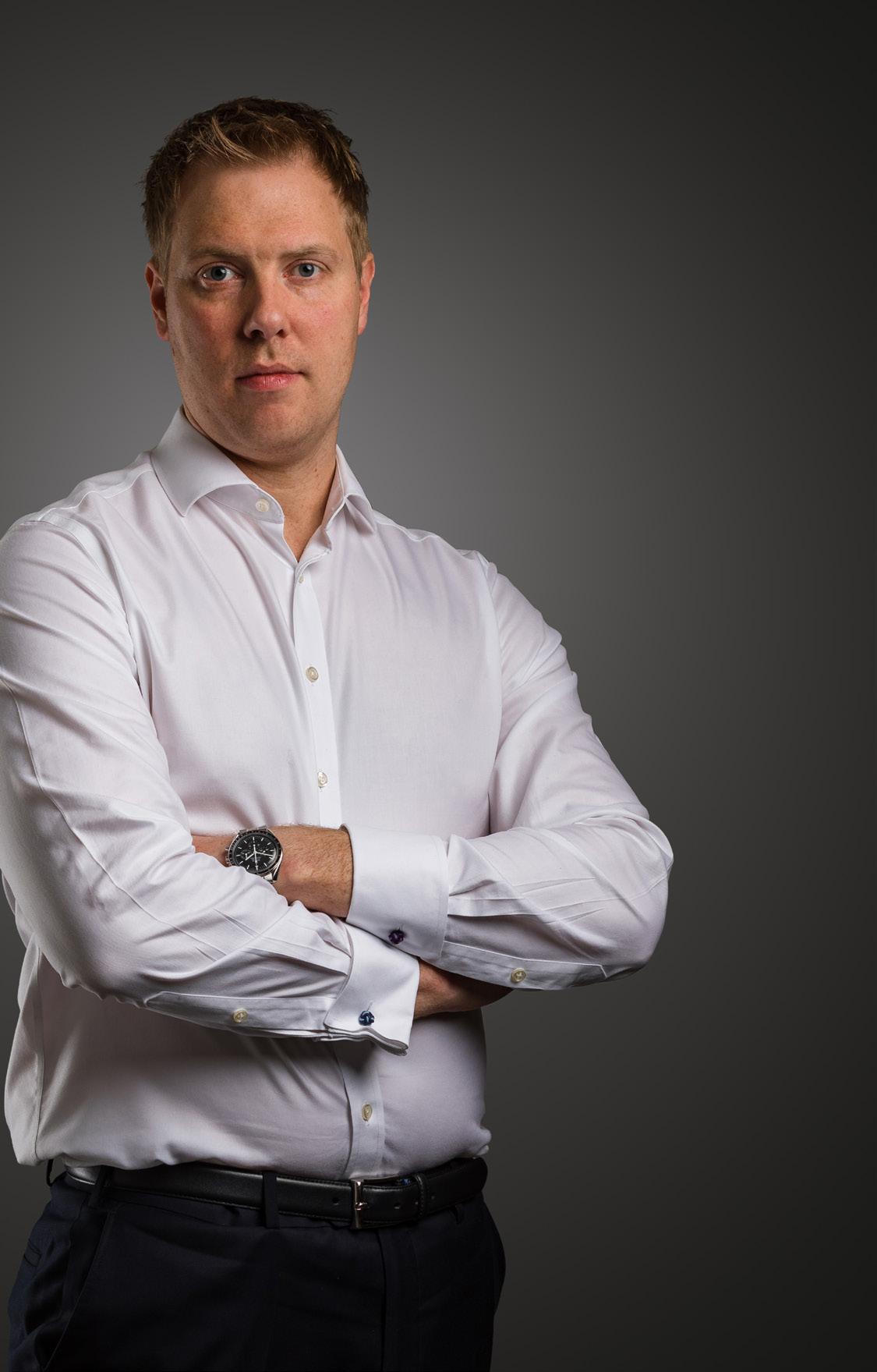

In every organisation’s history, there are usually a few executives that have a defining impact. For YBS, one of the most influential was Mike Regnier, the erstwhile chief executive who left to become CEO of Santander UK at the beginning of 2022.

David Morris says: “What Mike did was come in and effectively provide quite a lot of strategic clarity in terms of what we can and can't be. We need to be a savings and mortgage business and we need to get simple, lean, and focused. That's really been the mantra over the last eight years. What we've seen since about 2018 is an acceleration of that vision.”
Yorkshire Building Society focuses on mortgages, savings products and commercial lending, shying away from everyday transactional banking (which is highly regulated with a lot of competition) in favour of higher-interest products that encourage consumers to put some of their money aside. That means YBS has three core lines of business, which Morris describes as “low-touch but meaningful”. The company is one of the largest lenders in the UK: “We’re very big but we’re focused,” he explains.
The sheer scale that YBS has been able to achieve is testament to the laser-tight focus within the business. “We want to make sure we're doing things purposefully; we want to make sure we've got the capability to execute against that; and critically we only compete in parts of the market where we think we can win,” Morris continues.
On mortgages, this means a higher proportion of its lending goes to firsttime buyers or customers who are often overlooked by other providers. This allows them to occupy the underserved space in between other mainstream lenders, carving out a competitive advantage for themselves. “They’re good people but for whatever reason other banks are not providing solutions that help them get on the housing ladder,” Morris says. YBS still lends to more affluent customers who have higher equity in their homes, but they are clear that the
“ I FIND MYSELF ENGAGED BY PEOPLE WHO ARE ABLE TO BREAK PARADIGMS, THINK DIFFERENTLY AND LIFT THEMSELVES OUT OF THE STATUS QUO ”
DAVID MORRIS BA, MA CHIEF COMMERCIAL OFFICER, YBS
business’ focus is on being purposeful and finding innovative solutions.

This incisiveness and clarity of focus, coupled with the fact that YBS is “just a building society”, often leads to people underestimating their scale or level of expertise. Morris says: “I think the YBS of today is far more capable than people realise. It's very interesting when you go out into the market and people say, ‘oh you're a building society, do you know X’ or ‘do you know Y’? Of course we know it, we're really very good. It's just we're very, very focused.”
This clarity of focus is clearly winning: in H1 2022, YBS outperformed some of the UK’s traditional ‘big six’ banks in terms of
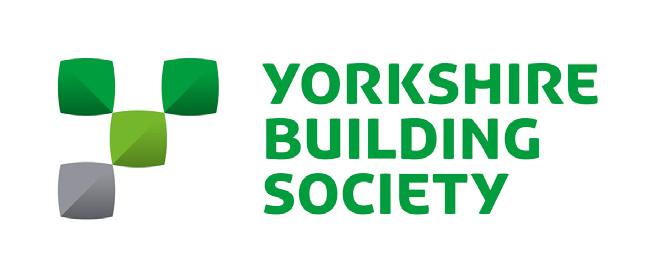
“ WE HAD A GOOD PHYSICAL BUSINESS MODEL , GOOD BRANCHES, BUT WE WERE REALLY LAGGING BEHIND ON BOTH TECHNOLOGY AND DIGITAL PERFORMANCE ”
BEN SAMPSON, MBA DIRECTOR OF BUSINESS TRANSFORMATION, YBS
both book growth and yield performance. It is also highly competitive now on digital. Morris believes that there are other financial institutions who could learn from this focused strategy.
When you think about digital transformation, you tend to think about the process of replatforming and the multiple legacy systems that often hold firms back. That is one of the key tenets of digital transformation after all. But, as with any sizeable undertaking within a business, the most important thing to get right from the outset is strategy. It can be a challenge to get everybody within a business subscribed to a digital transformation – it requires a huge
cultural shift – but it can also be difficult to get all your objectives aligned.
When Director of Business Transformation Ben Sampson joined the business, YBS had an ageing legacy platform powering its websites; it didn’t have a consumer app; and the percentage of customers signing up through digital was somewhere between 15% and 20%.
It’s not an atypical hangover for a building society to have; indeed, according to research from the Building Societies Association published in 2021, twothirds of building societies identify digital transformation as the main challenge facing the sector in the next five years.

“We had a good physical business model, good branches,” Sampson says. “But we were really lagging behind on both the technology front and the digital commerce performance front.”
First, Yorkshire Building Society established a single vision and ambition organisation-wide that everybody was aligned to. Digital transformation has proven to be a considerable, long-term investment for the business – the single biggest programme of work that YBS has ever done, as Sampson puts it. “That’s as significant as the replatforming for me,” he says. “A business that gets unified behind that single goal, which can then lead to all the important elements of conditions for success such as the ability to have razor-sharp prioritisation discussions. They’re not possible if you’ve got different viewpoints, because it just becomes an argument.”
YBS built and launched its first native apps for iOS and Android, getting into the pockets of its customers for the first time. The demand has always been there: research shows that a majority of UK banking customers want their banks to offer
mobile apps. It established a partnership with identity confirmation provider HooYu, allowing it to elevate its onboarding and ID verification process. Together, they developed a programme called “experiencedriven acquisition”, which involved building a more seamless account opening process. Alongside the partnership with HooYu, YBS also redesigned some customer journeys and replatformed to make this project work.
YBS has also invested heavily in modernising its mortgage origination system. A new platform was introduced in 2018 and through the programme this has been extended, adding the remaining products one by one. Significant time has also been spent optimising this tool, working with technology partner Iress to create innovative solutions and leverage its capabilities. Permanent squads were also set up, allowing technical expertise and strong relationships with the supplier to develop. The result is that the speed of change has increased by 300%.

Morris says this has had a huge impact on the business: “When I started at YBS I saw our mortgage business had lots of potential. I think it is easy to overlook the impact of our transformation here but, for me, this has been the spark that enabled the broader transformation. With our mortgage engine firing, we have been able to subsequently transform our savings proposition and invest further and faster in our digital transformation.”
The results have been staggering, the company says: digital acquisition has gone from 20% of the mix to over 70% and the online book is over 2.5 times bigger than it was before the transformation began; over 20% of lending originated utilises the new capabilities the transformation delivered; and digital satisfaction has increased by over 40% in the last 12 months alone.
It also transitioned away from waterfall development, which just wasn’t cutting it with the modern digital technologies, and created a ‘digital services tribe’ instead. It was the first time that YBS had attempted to work in that agile way at scale, so clearly the technical undertaking itself was vast. But it all stemmed from a single collective vision that helped to clearly define the building society’s priorities, who it was and who it served as a business, and exactly how it would take advantage of the digital opportunity before it.
“As we have learned we have sped up certain bits, slowed down and reordered priorities,” David Morris says. “But we have done this in a way that is completely

1864 YEAR FOUNDED 1982 MERGER BETWEEN THREE BUILDING SOCIETIES CREATED YBS
£60bn YEARLY REVENUE
consistent with our long-term vision, which remains unchanged. This has allowed us to continue to review and improve our performance in terms of delivery and value creation. Our modular approach has also helped enable this.”


At that time, YBS had never undertaken a digital transformation programme on this scale before. It needed some support to mobilise and to get that initial jumpstart, which is when it partnered with business consultancy Johnston Carmichael. Their expertise and knowhow supported YBS in accelerating and creating pace, but it also offered a couple of additional edges – like challenging YBS’ own internal ways of thinking, and lending an experience and a pragmatism that firms like Johnston Carmichael benefit from.
They've got a team of very experienced, highly professional people that have been through a number of cycles of both the external environment and transformations,” Ben Sampson says. “That experience is invaluable when you've got a company like YBS, which has good core capability but maybe hasn't done this before and is lacking in that real-world experience. Johnston Carmichael certainly brought that. They came in, they gave us a huge injection of pace, they gave us some really strong critical thinking, and they brought a clear view of design thinking.”
Carmichael is indicative of YBS’ broader thinking around collaboration and partnership, as Sampson explains: “We want to be more selective about the partnerships we have. We can't throw good money after bad if we get that wrong. So we tend to go with trusted partners and longer-term
relationships. We will often run competitive processes with people we've worked with before and we look for a cultural match –people that will work well in our business. It’s vital that we have people who have done this before. We want to learn from others, we want to take their experience to help us be successful.

“The thing that's absolutely essential from any partnership for us is that they must help us to learn, and to be able to do that, they need to leave a legacy of us being able to do things ourselves. We don't want transactional relationships that give us a step change that then falls away. It's one thing to transform, but it's another thing to then optimise. And to be able to optimise, we need to be building our capability as we do it.”
David Morris concurs: “We want people who can augment, people who can do things that we can't or people who can help us accelerate. We’re not looking for people to
come in and do the stuff that we can already do, because we already have some skillful, capable people within the business.”

So who inspires them? “I believe in the power of people and in creating environments that allow people to thrive,”
Sampson says. He is drawn naturally to people who have overcome adversity: to Stephen Hawking, who became the preeminent scientist of his generation despite battling personal adversity; to Richard Branson, who built Virgin from the ground up and who today is quite pioneering about the way in which he nurtures his teams, giving them unlimited time off as an example.
Sampson also identifies with Steven Bartlett, the founder of marketing agency Social Chain and the youngest investor in the history of Dragon’s Den (the UK version of Shark Tank). He also has a podcast charting
the highs and lows of being a CEO. Sampson calls him an inspirational figure and likes the fact that Bartlett dropped out of university, like he did.
David Morris says that central to his style of leadership is a ‘belief in better’. He is inspired by people – both from within YBS and outside the organisation – who are able to think differently, challenge the ordinary and strive for something extraordinary. “I genuinely find myself engaged by people who are able to break paradigms, think differently and lift themselves out of the status quo. People who are able to say ‘here's a completely different way of doing things’.”
That disruptive mindset has always been rare, but wherever they exist those people are usually invaluable assets. There is clearly something of a disruptor personality trait among Morris and Sampson themselves. When we first speak, it is just a few days before Christmas – yet there is no let-up
for either of them. They brim with passion about the progress that YBS has made, the potential it’s unleashing within the organisation, and crucially the benefits it will bring for customers.
YBS has spent the better part of eight years reorienting its business towards customers: giving them the platforms and digital channels they expect, but also honing its propositions so that it can meet underserved demand in the grey space between traditional high-street lenders.
David Morris believes that, because business value has played such an integral role in YBS’ transformation, the customer has become an inescapable end-goal. Every path that YBS takes now leads to the customer. That means the customer has become a really useful currency for explaining digital initiatives to executive


stakeholders within the business, particularly those that are not digitally confident.
“To me, digital inherently means being customer-centric,” Morris says. “So when we're trying to build customer journeys, there's no point building great technology if it doesn't work for the customer. We've recognised that the solutions we need to create have to be built with the end-user in mind. I think that's just a natural, inherent part of this type of transformation.”
Sampson concurs: “We're building things that meet customer needs and wants, and that's research-based. That's quite powerful.”
Customer-centric design permeates every pore at YBS, including recruitment. Everybody that has been brought into this digital transformation journey has been steered by customer demand – from UX and UI designers through to programme managers. Much like its namesake region, Yorkshire Building Society has a distinctive character, a flavour, a non-negotiable way of doing things. It only takes on new people that fit into this customer-led culture. “You can be the world’s greatest project manager
or the most sophisticated architect, but if you don’t understand the YBS culture then it just doesn’t work,” Morris says.
That applies not just to the people that YBS recruits, but the partners it chooses to work with as well. The building society partnered early on with Johnston Carmichael to help them quickly realise pace, mobilise the digital transformation programme and become clearer on the designs of its digital products. This allowed it to remain focused from the outset on the customer.
“What Johnston Carmichael brought to the table was an acceleration of what we were trying to do, [along with] huge amounts of experience and pragmatism,” Sampson explains. “They used that to not only help us think about what we wanted to do, but to be a critical friend and challenge us in our thinking, and help us avoid pitfalls that others might have experienced who went before us.”
Looking ahead to the future, Morris continues: “Over the last 2-3 years, we've been able to prove just how much opportunity there is in the business and how digitising parts of our enterprise has created huge amounts of value. I think our vision for the next 12-18 months is about how we can go from good to great. We think our approach can be really quite distinct and unique by taking this best-of-breed approach, using digital and human to create something that's distinct in the market. And I think a big focus for us over the next period is going to be about how we create an operational model that supports this powerful acquisition capability we've built.”
“ TO ME, DIGITAL INHERENTLY MEANS BEING CUSTOMERCENTRIC. THERE'S NO POINT BUILDING GREAT TECHNOLOGY IF IT DOESN'T WORK FOR THE CUSTOMER ”
DAVID MORRIS BA, MA CHIEF COMMERCIAL OFFICER, YBS
